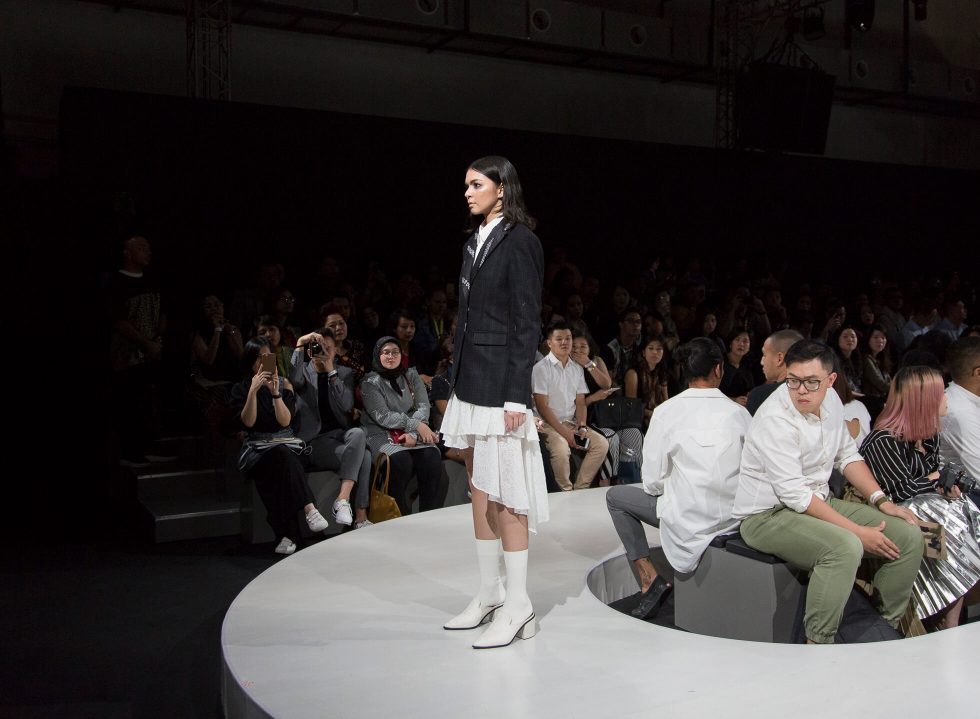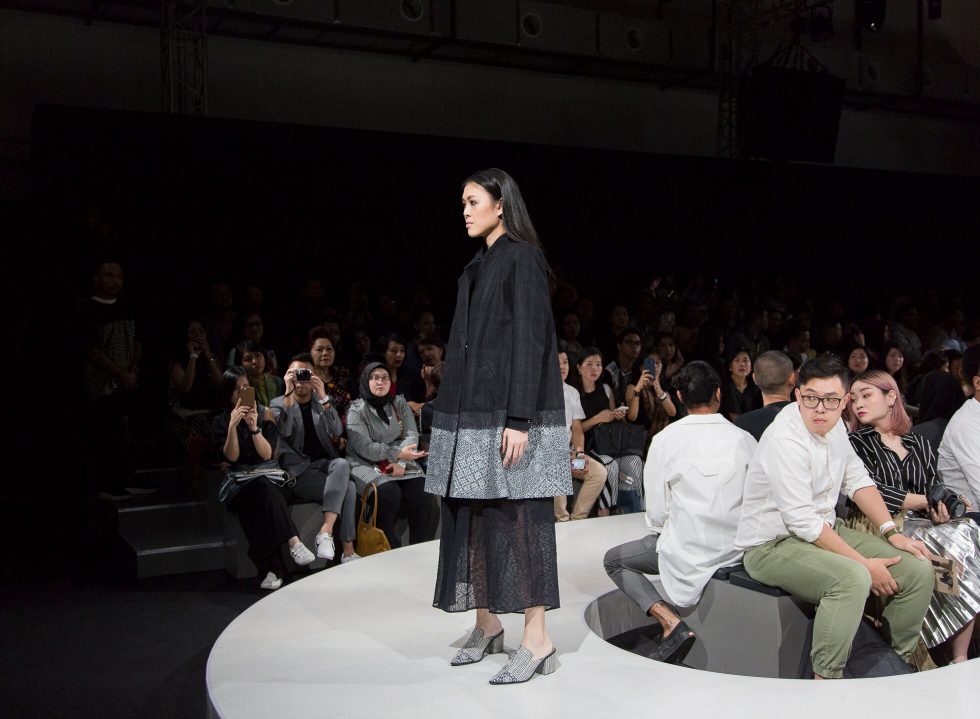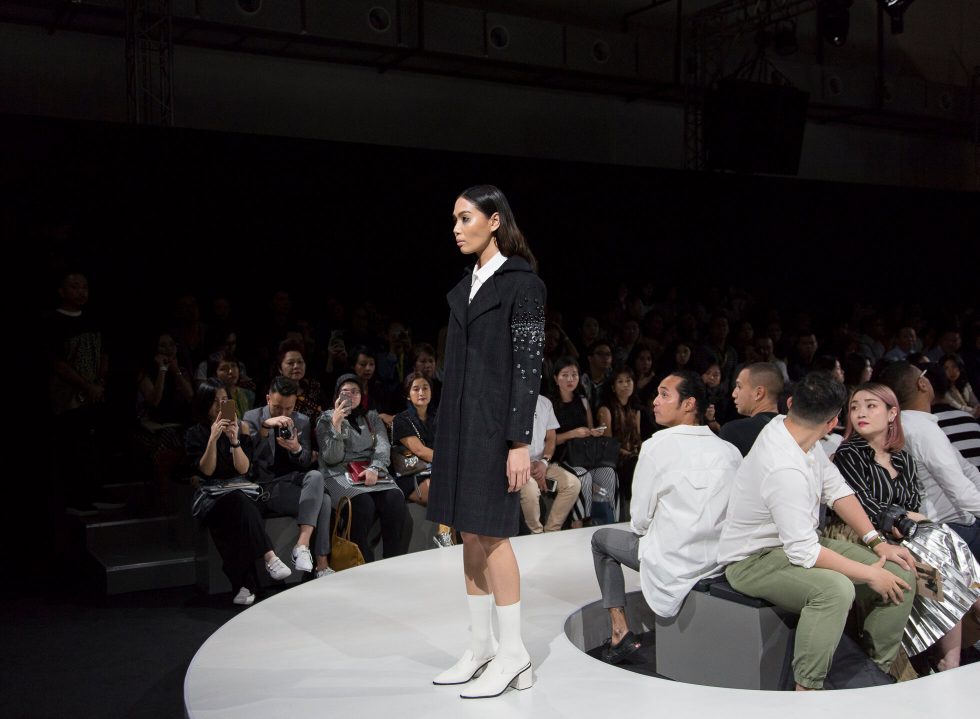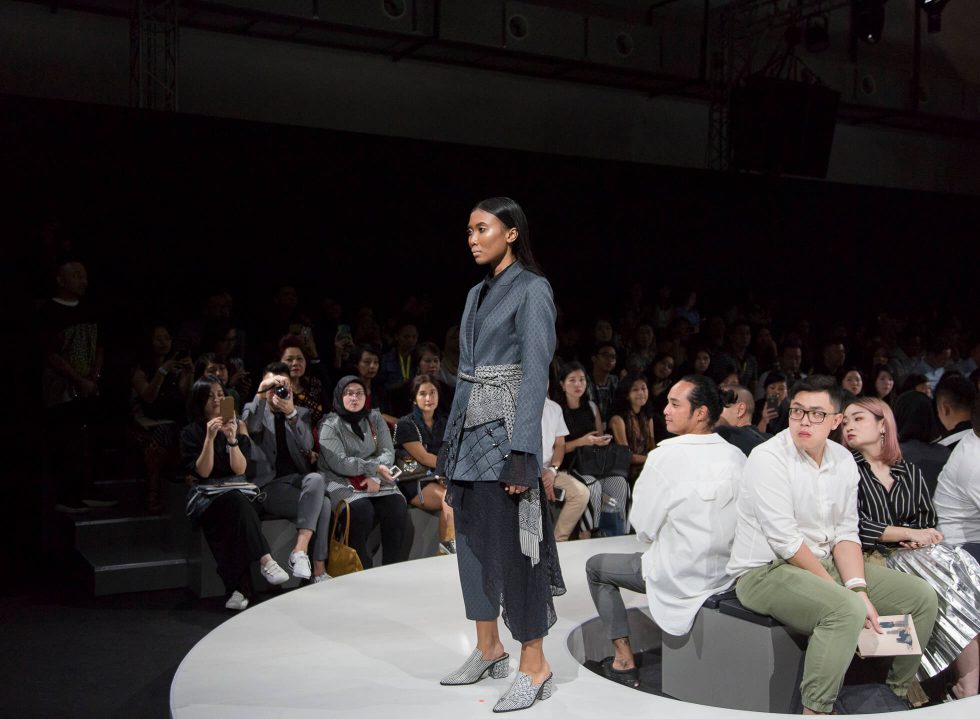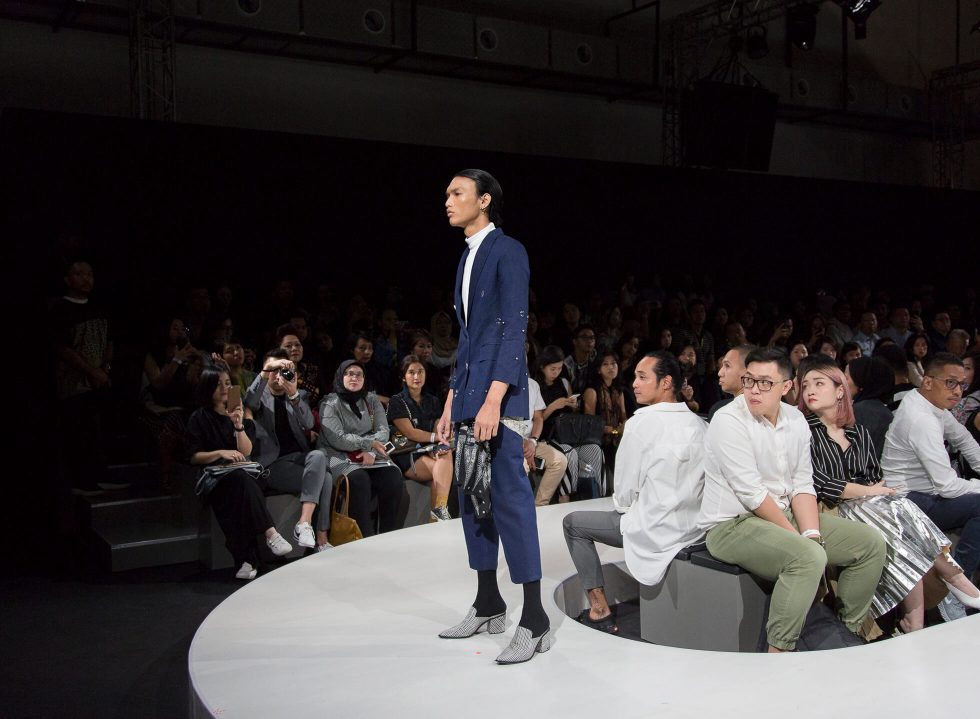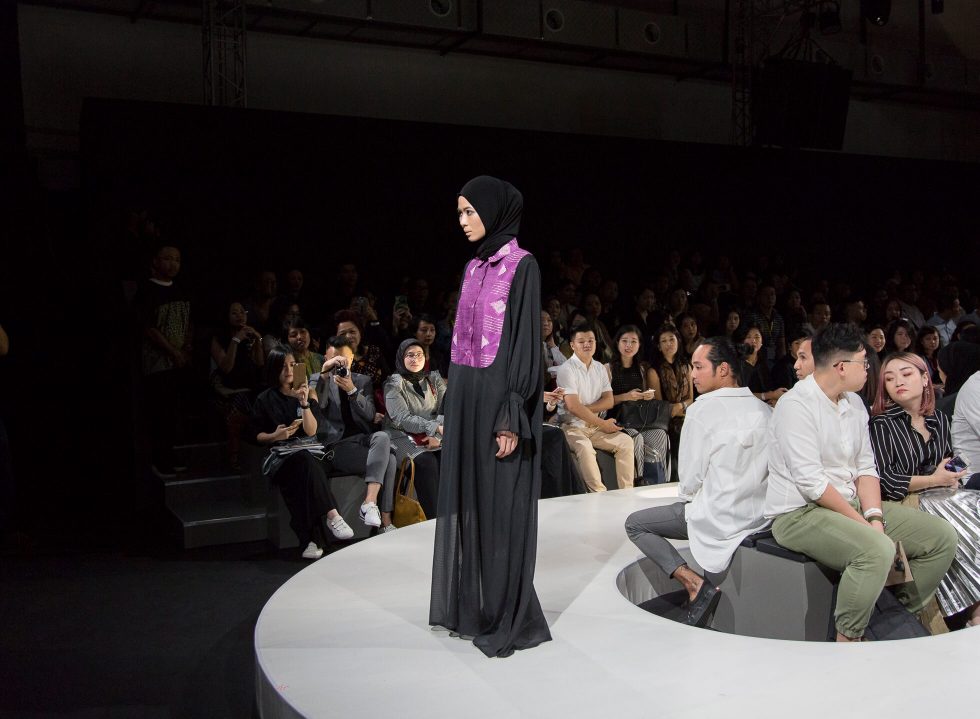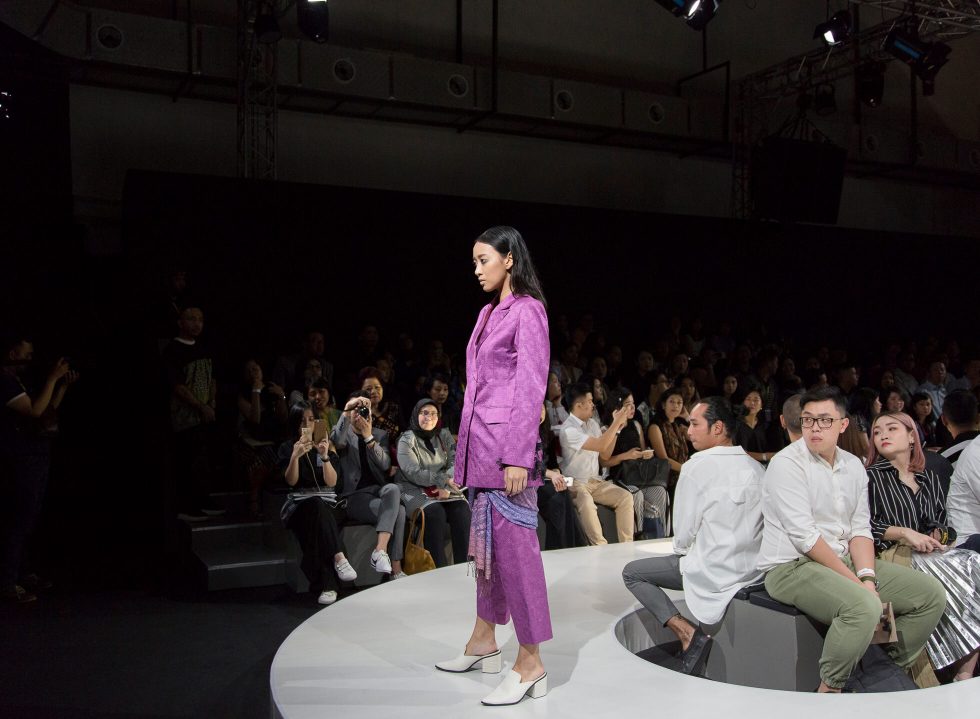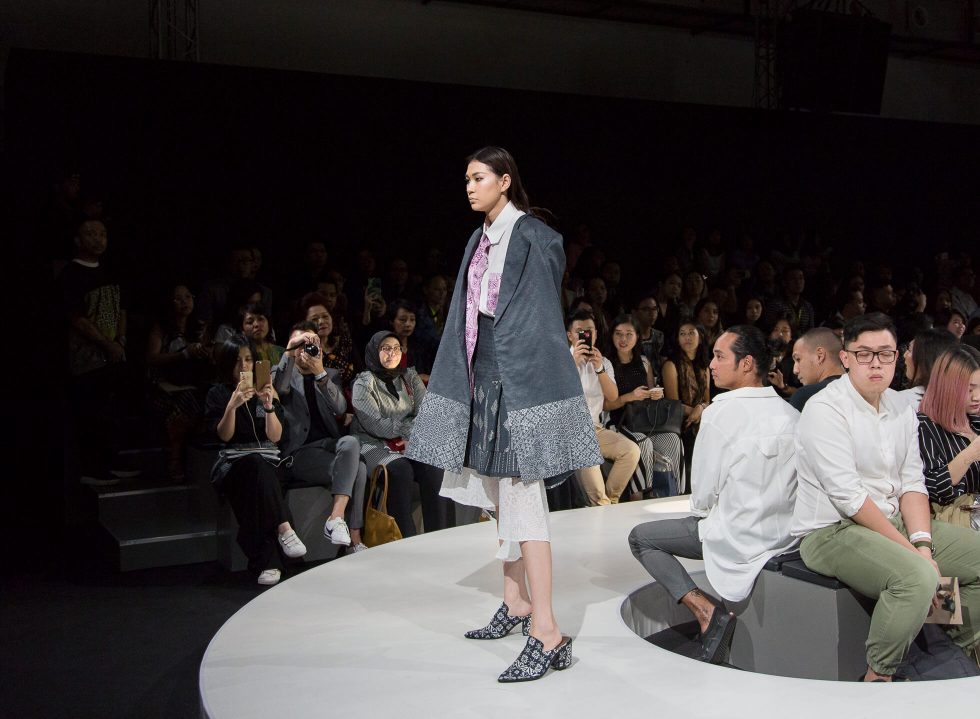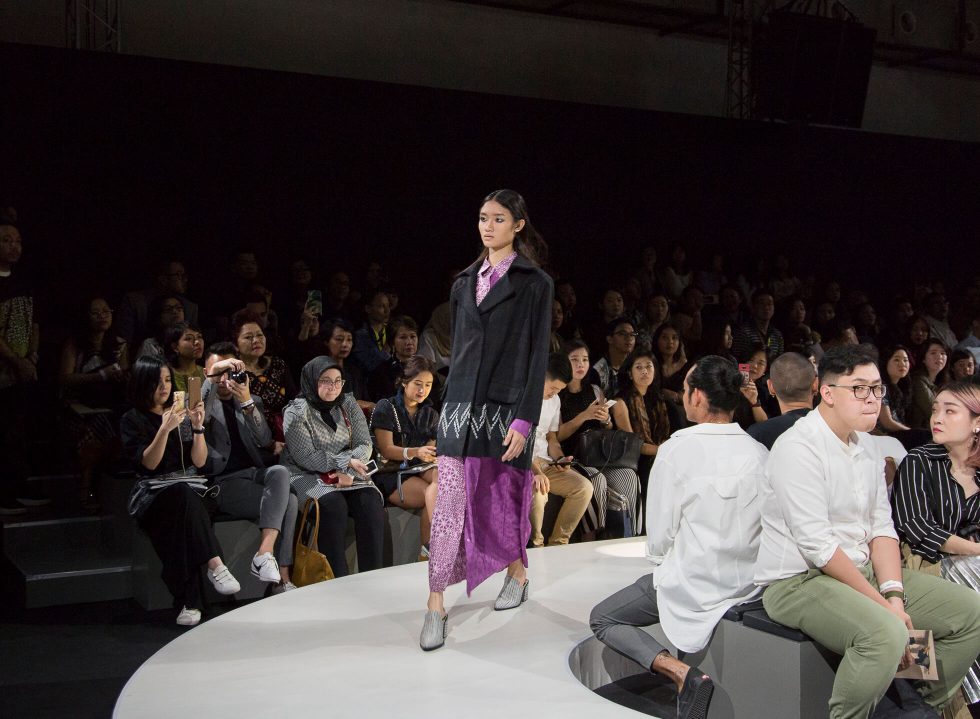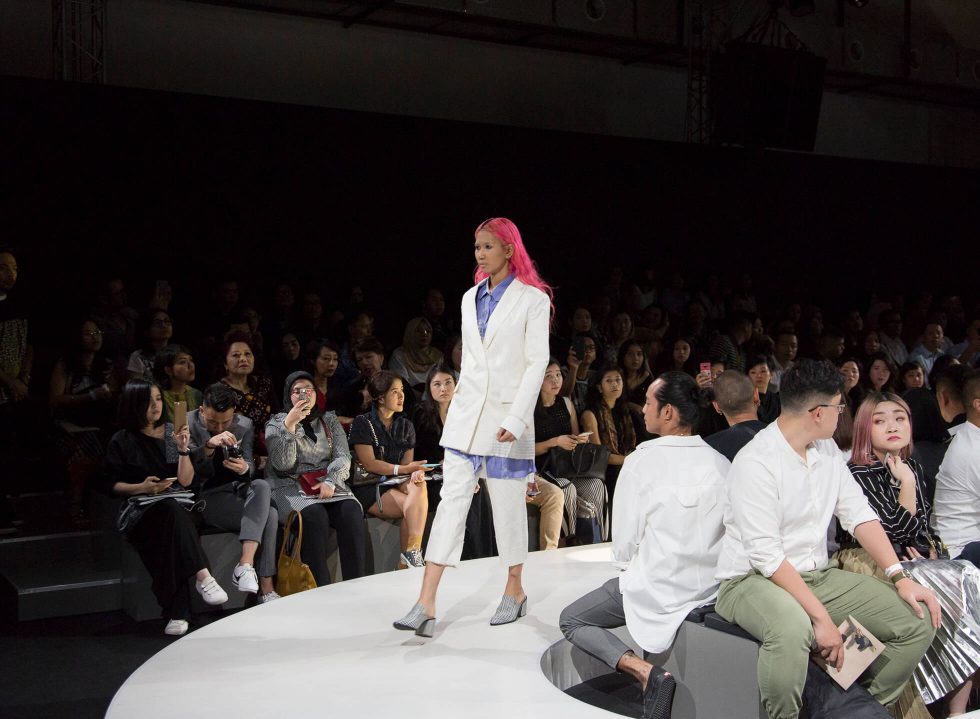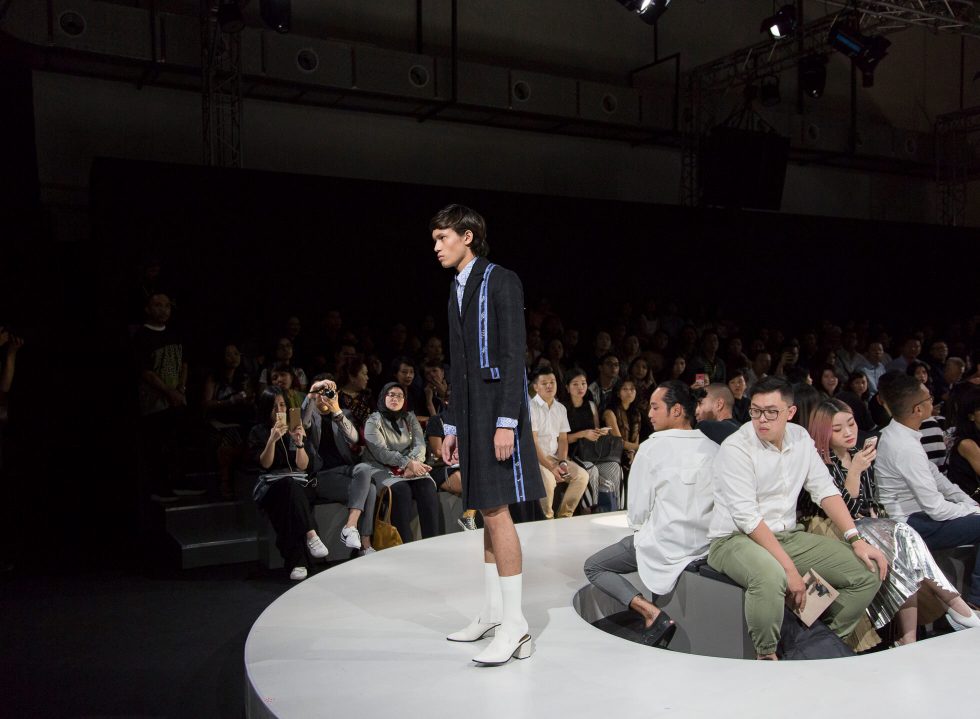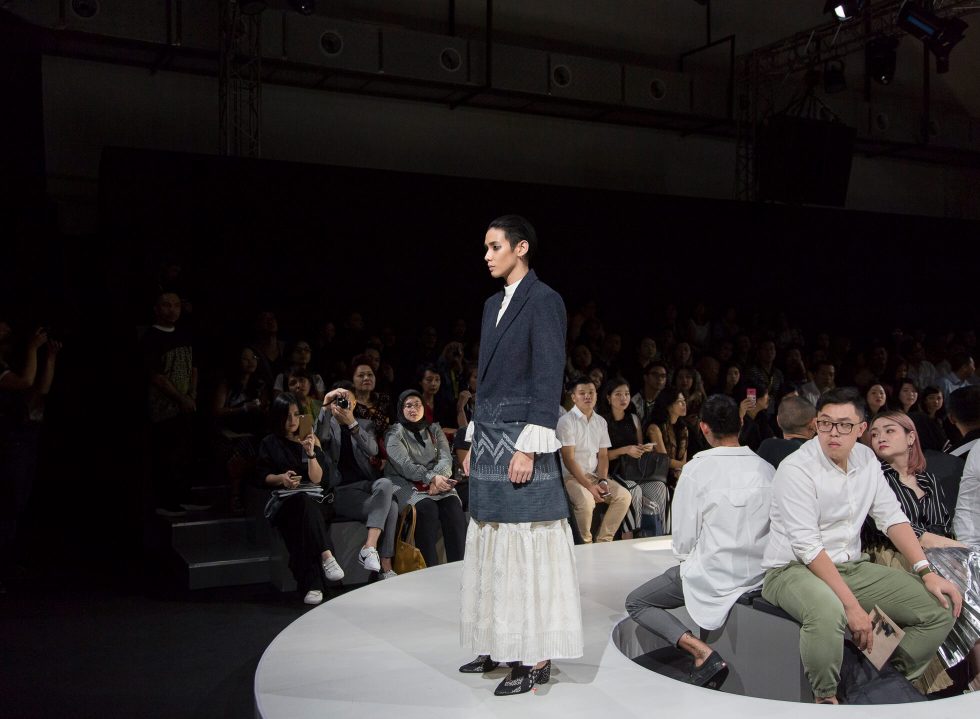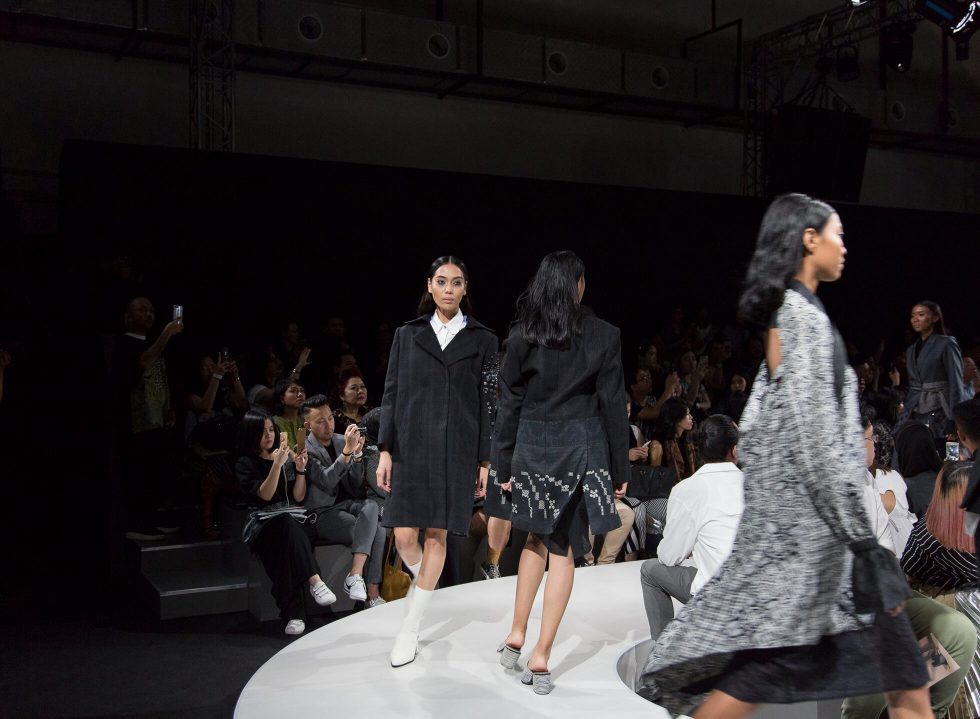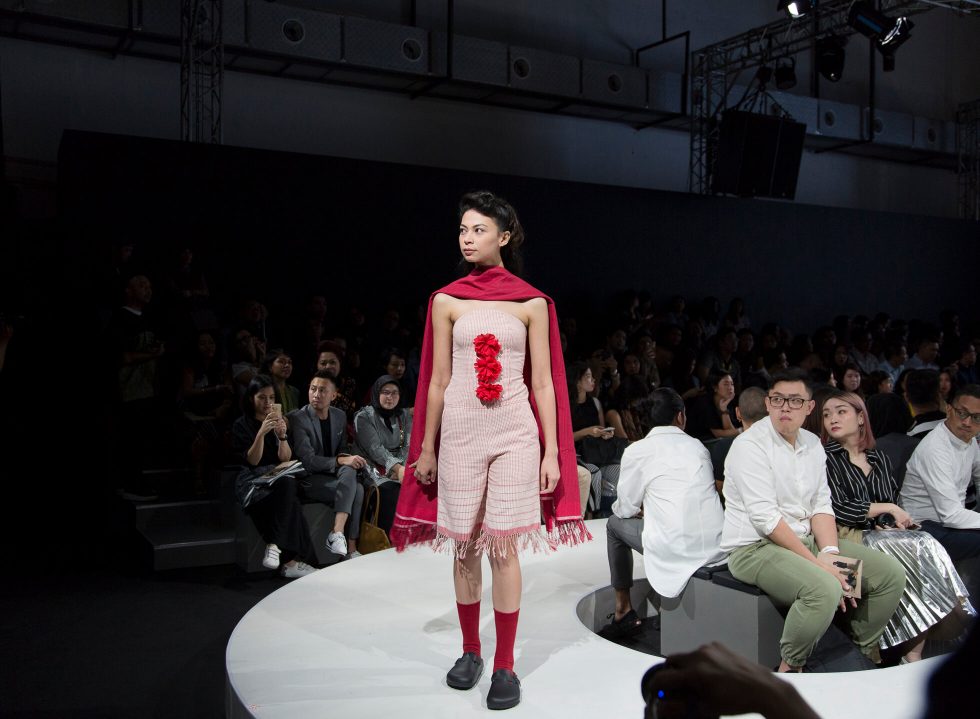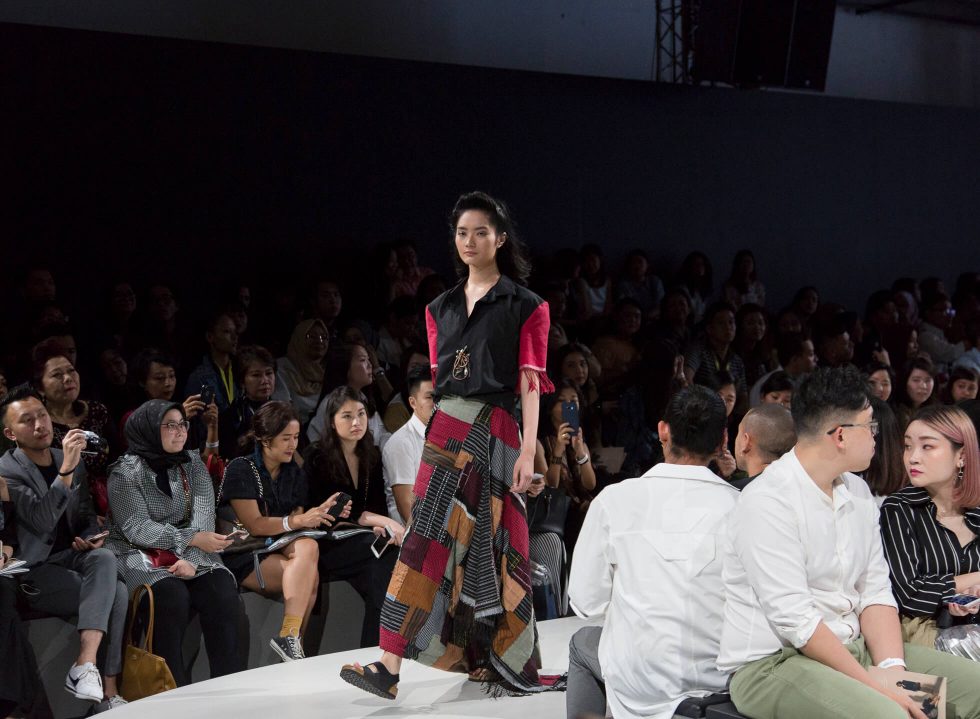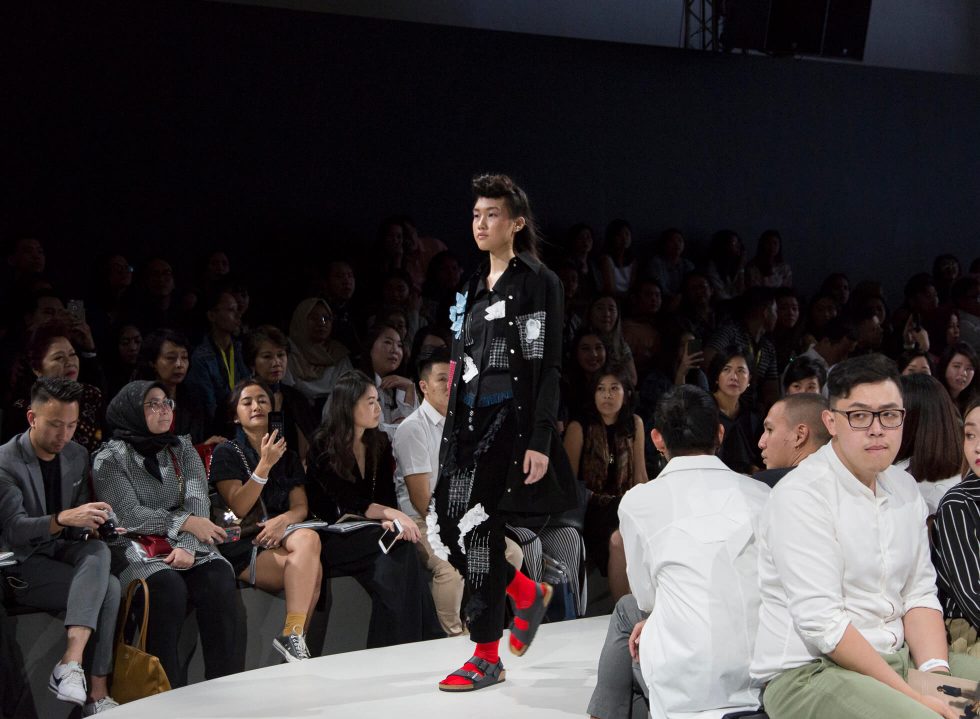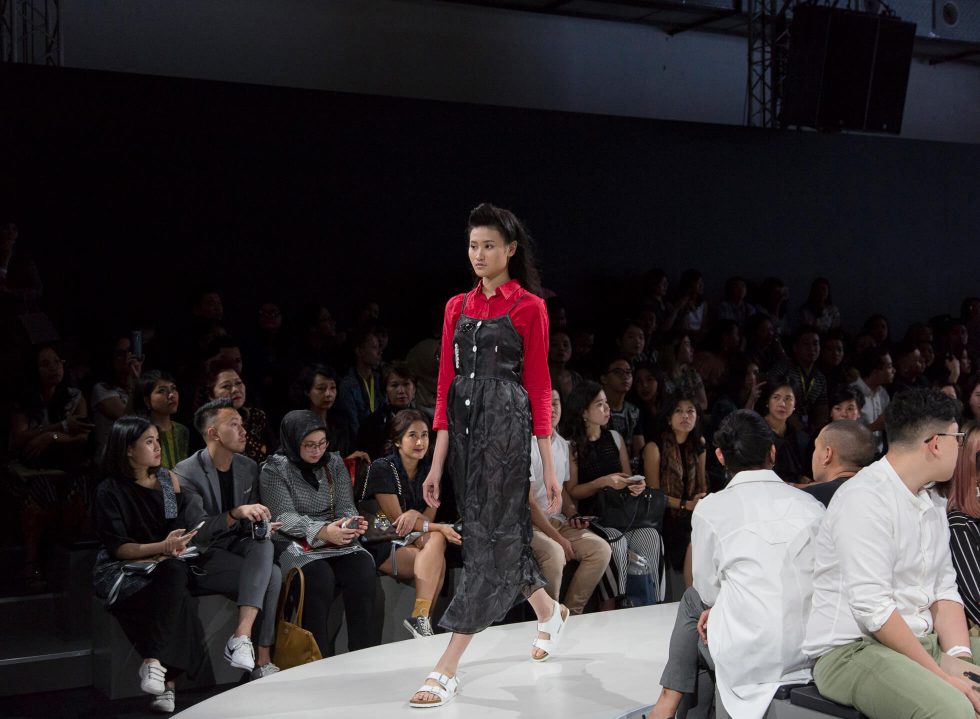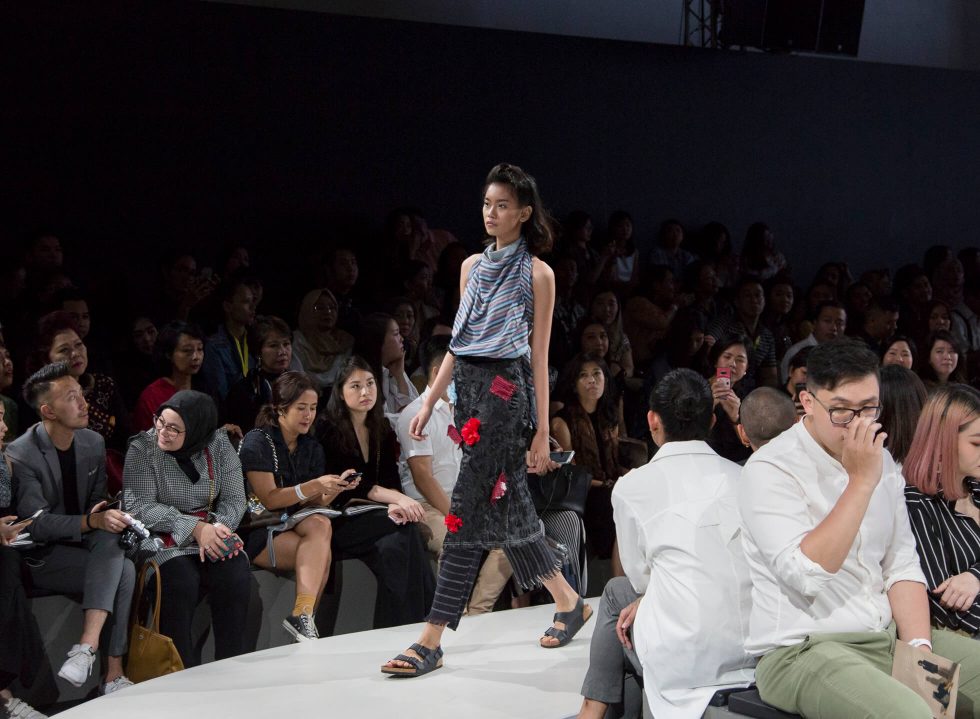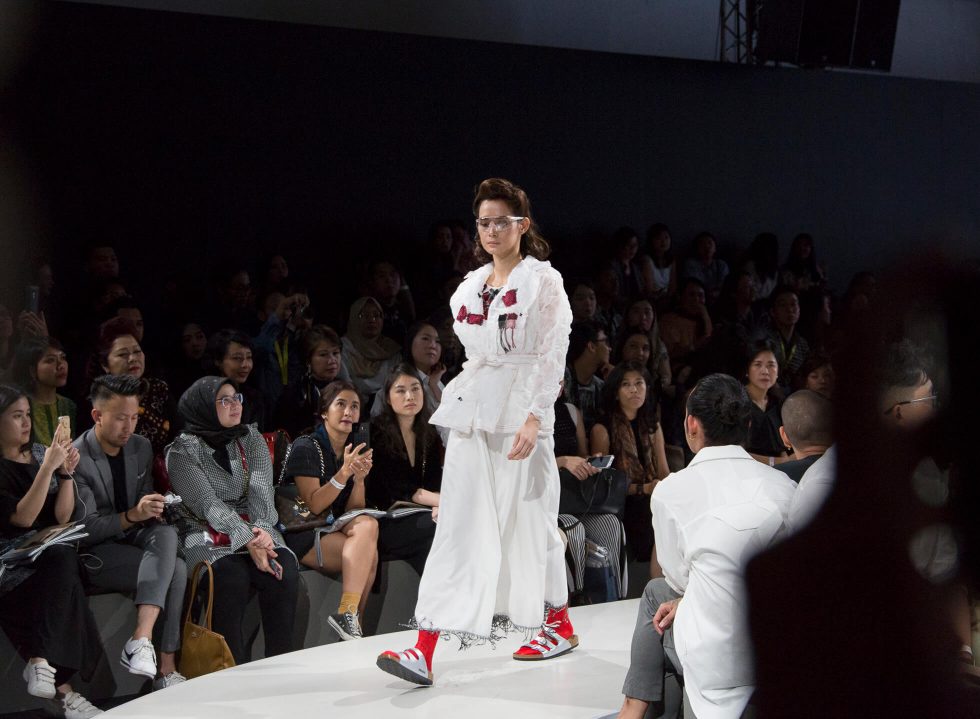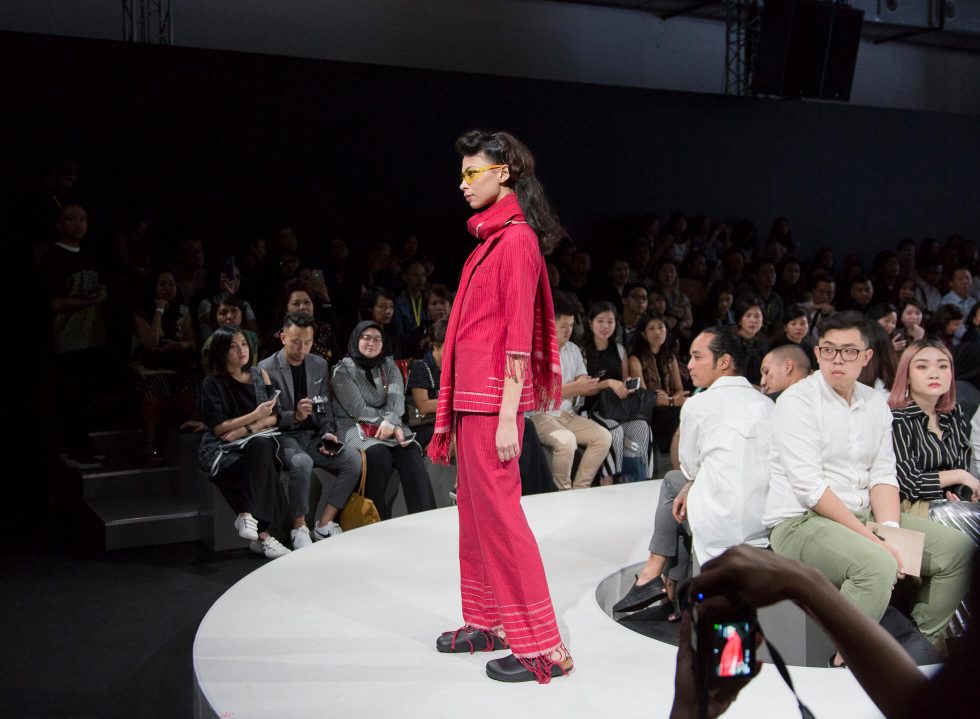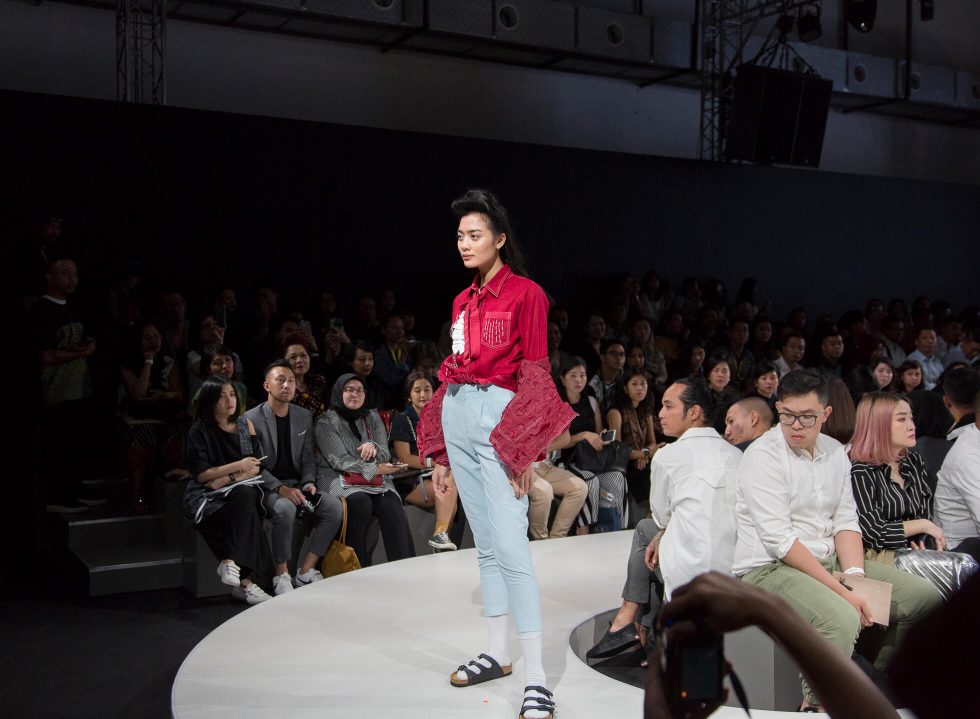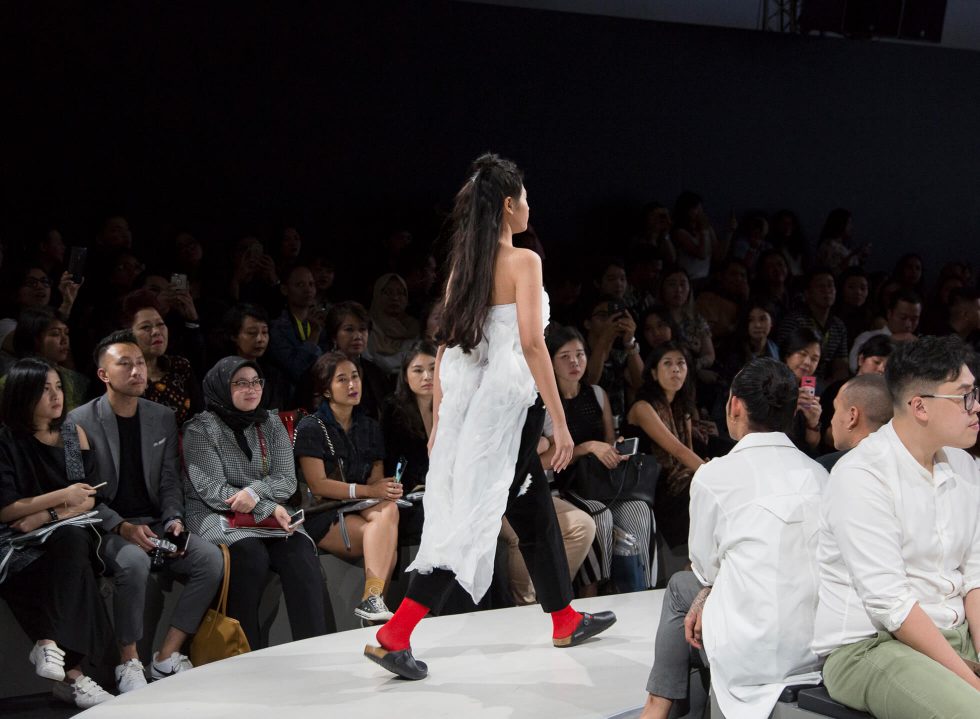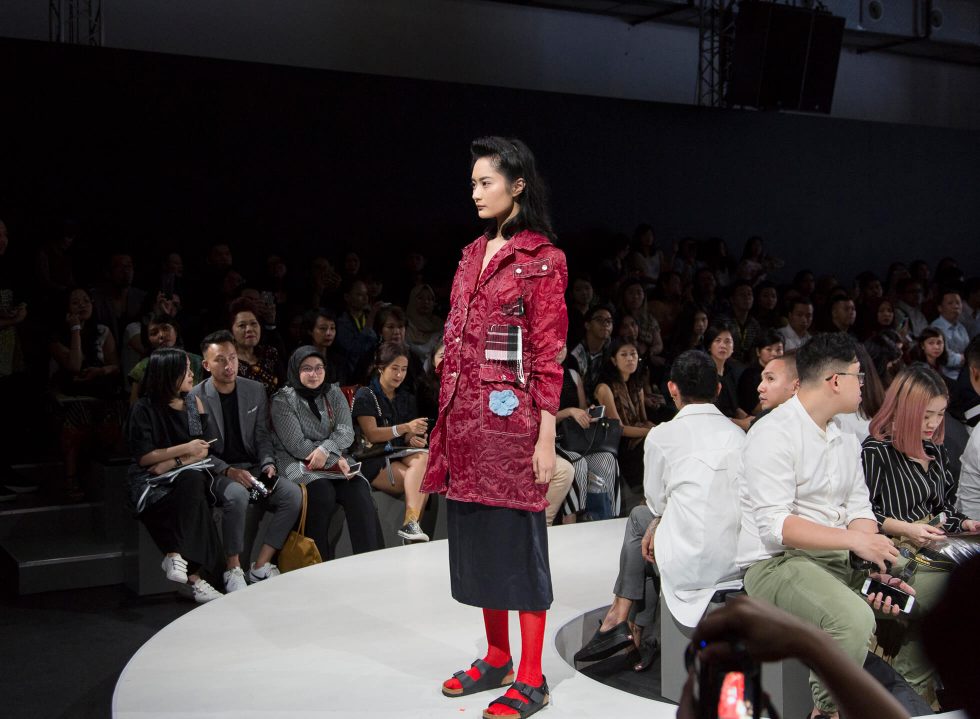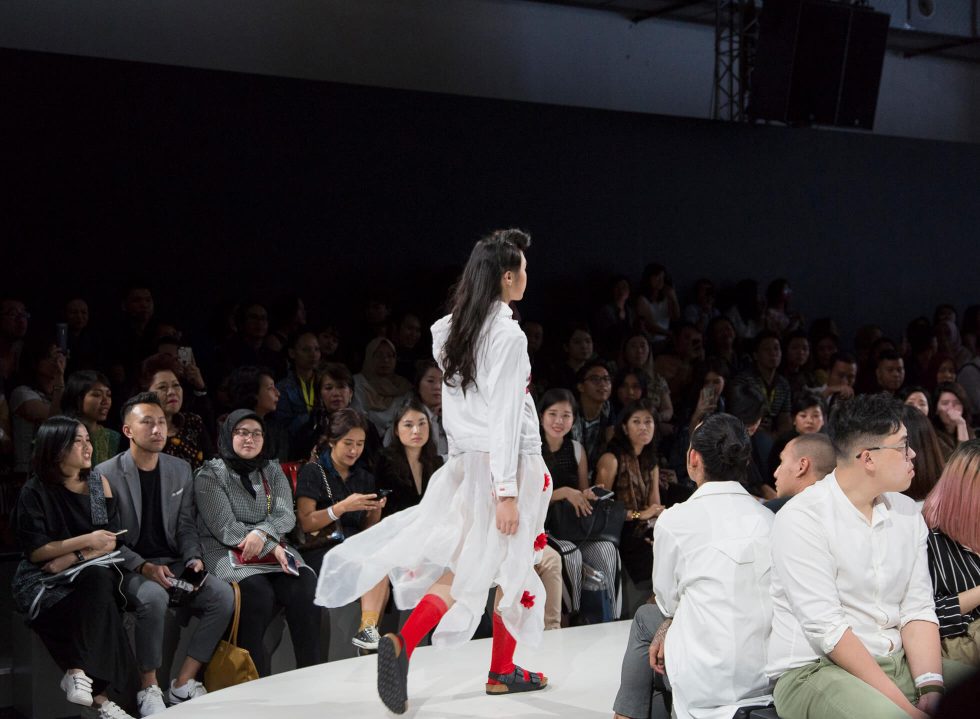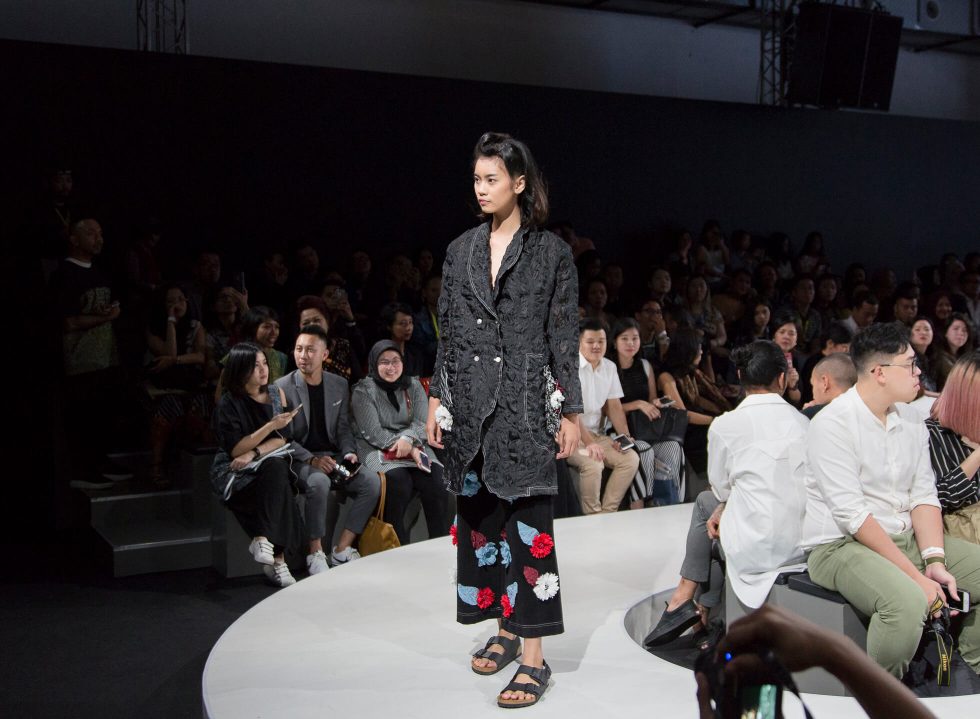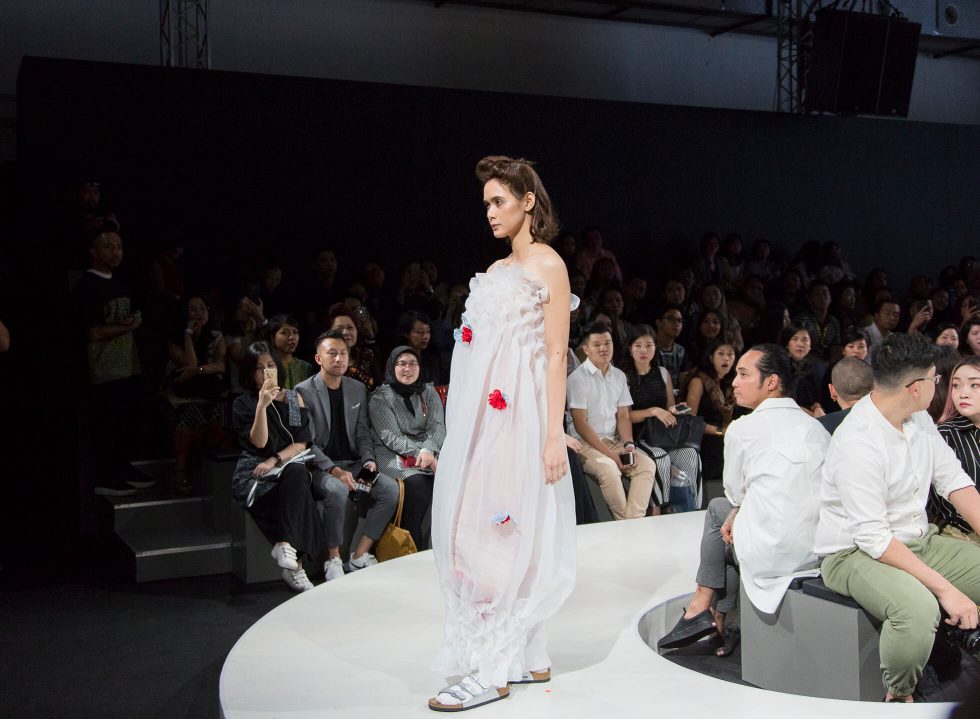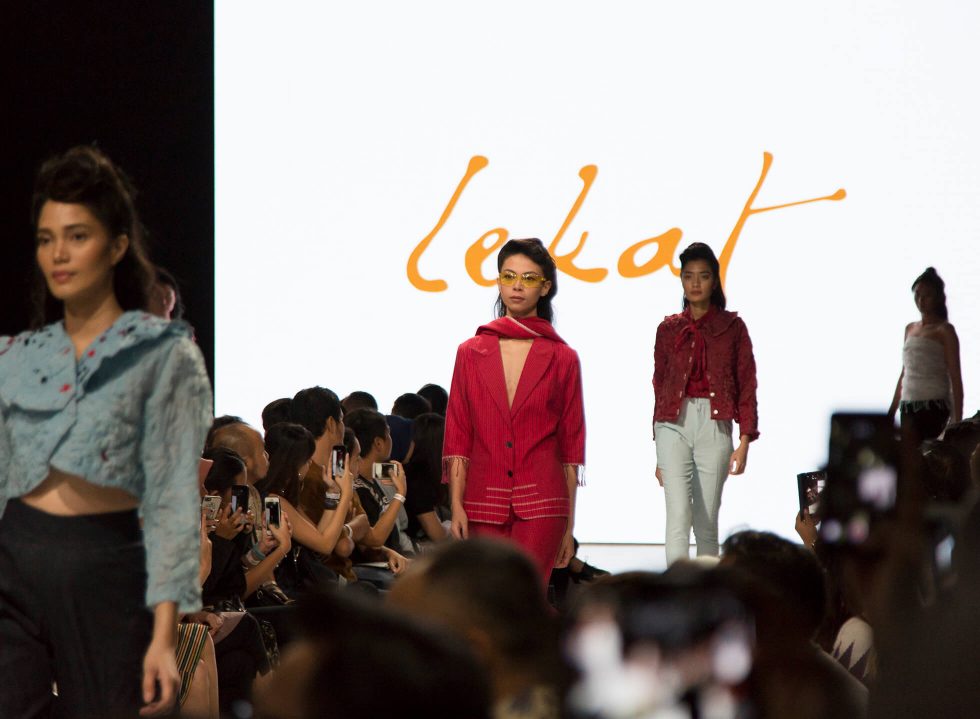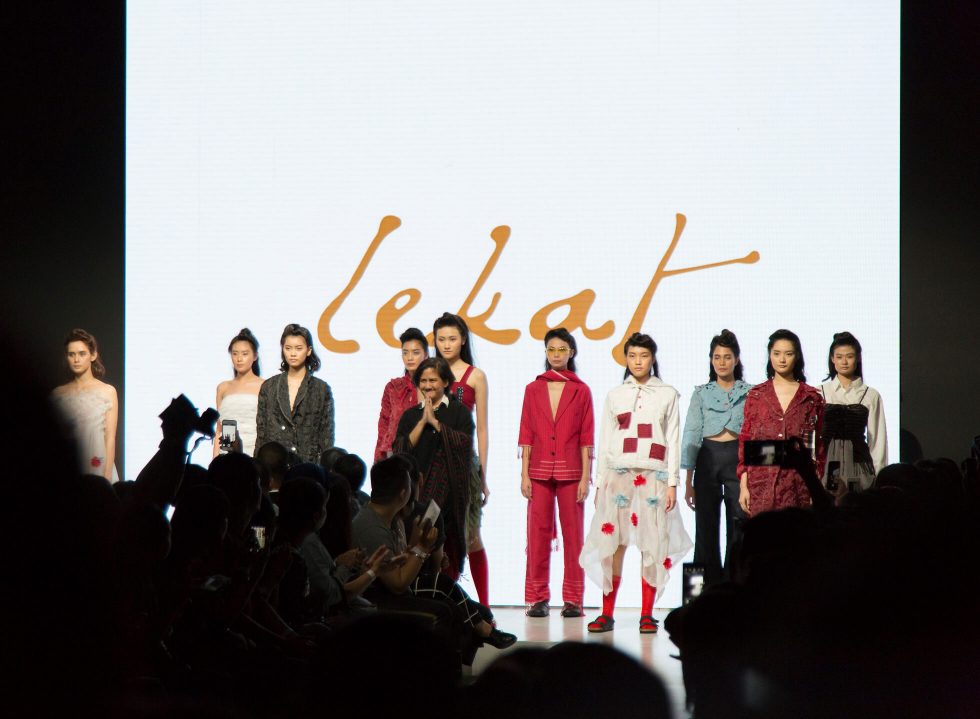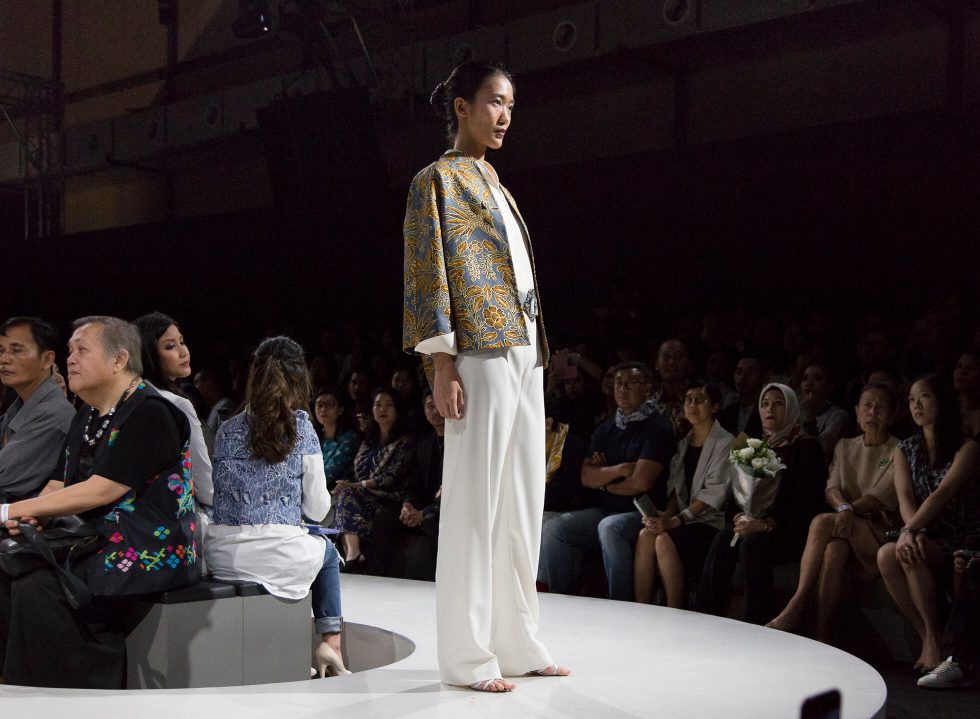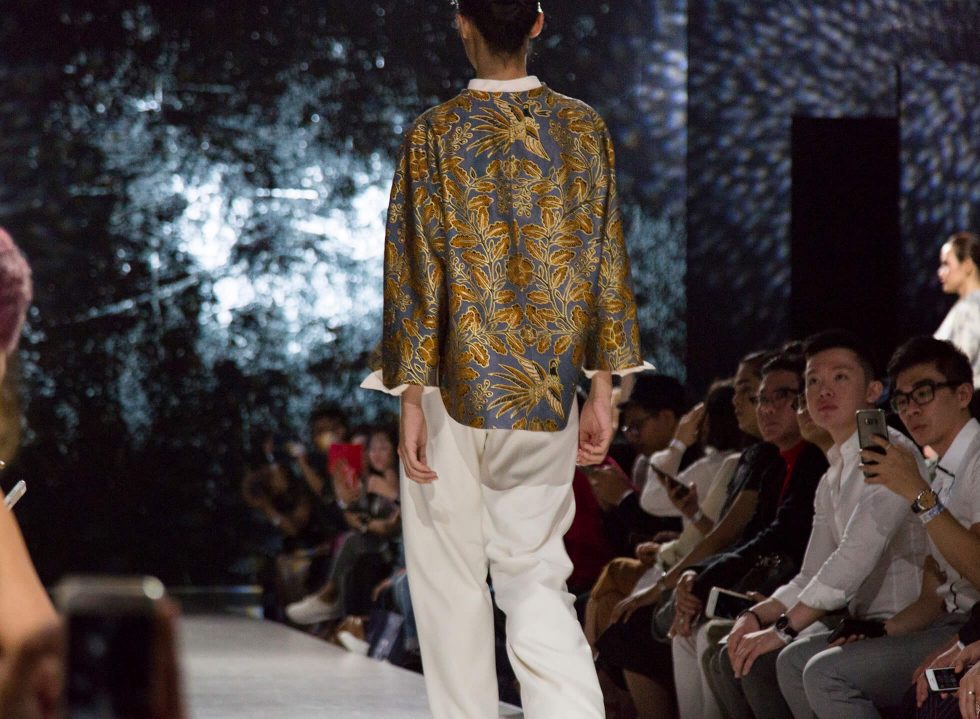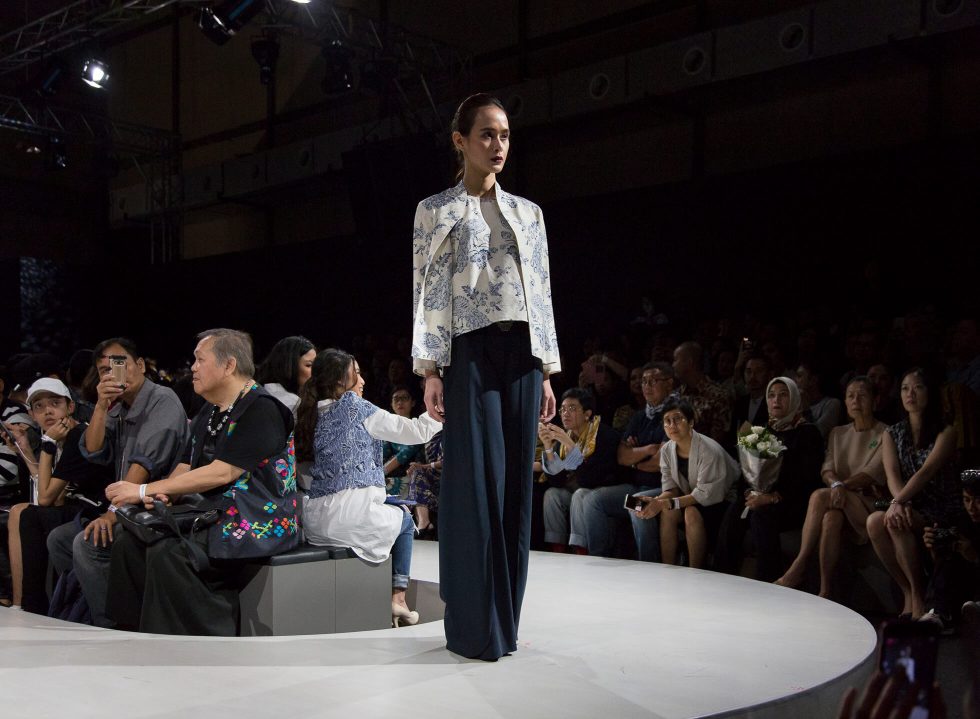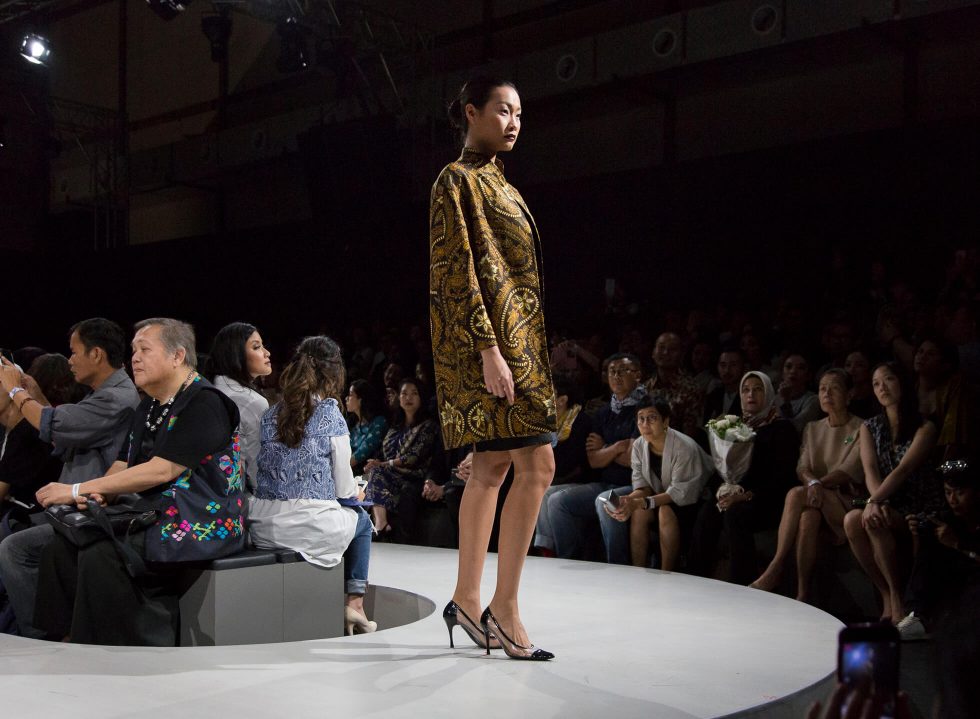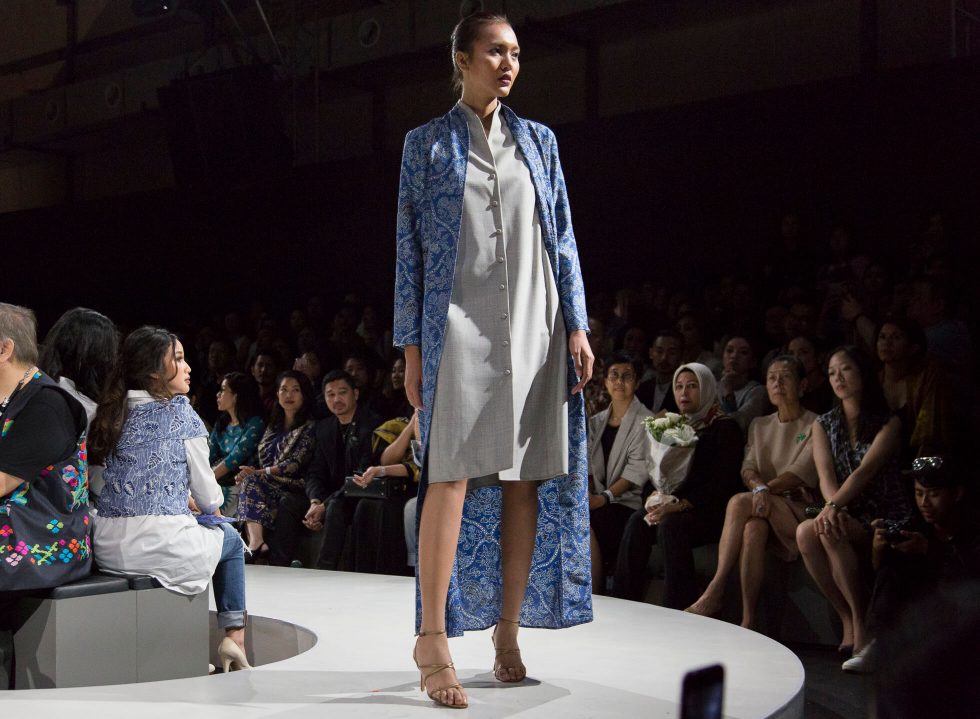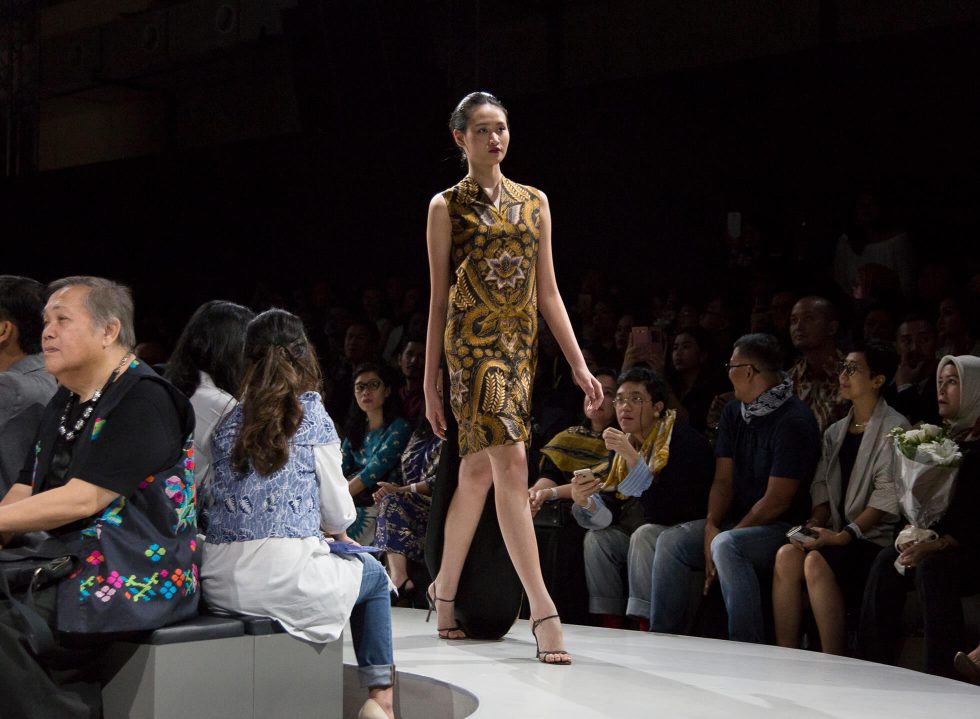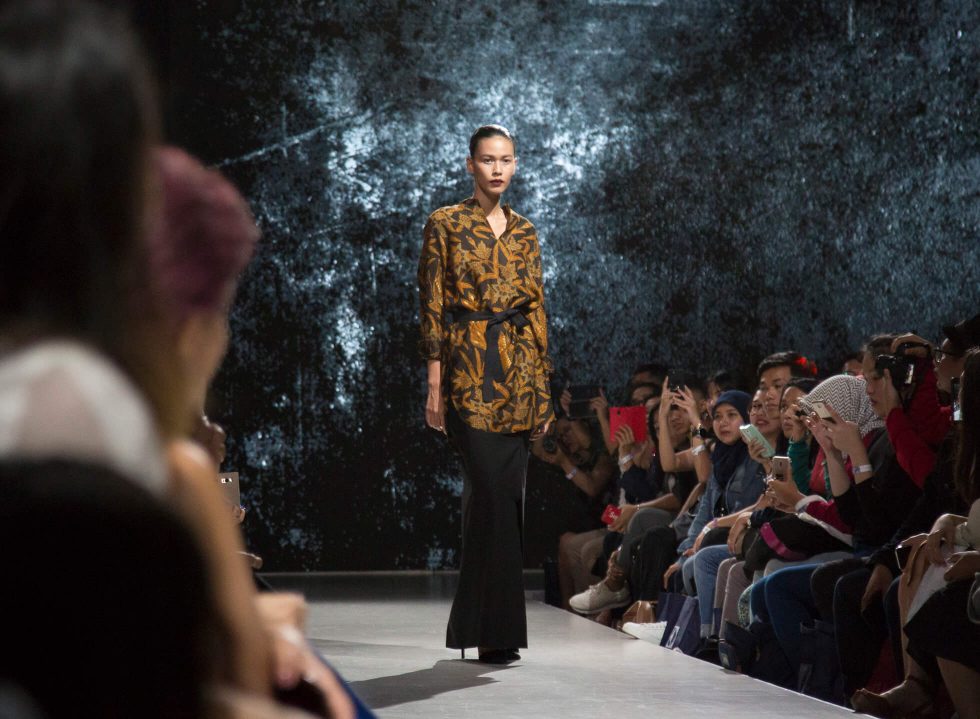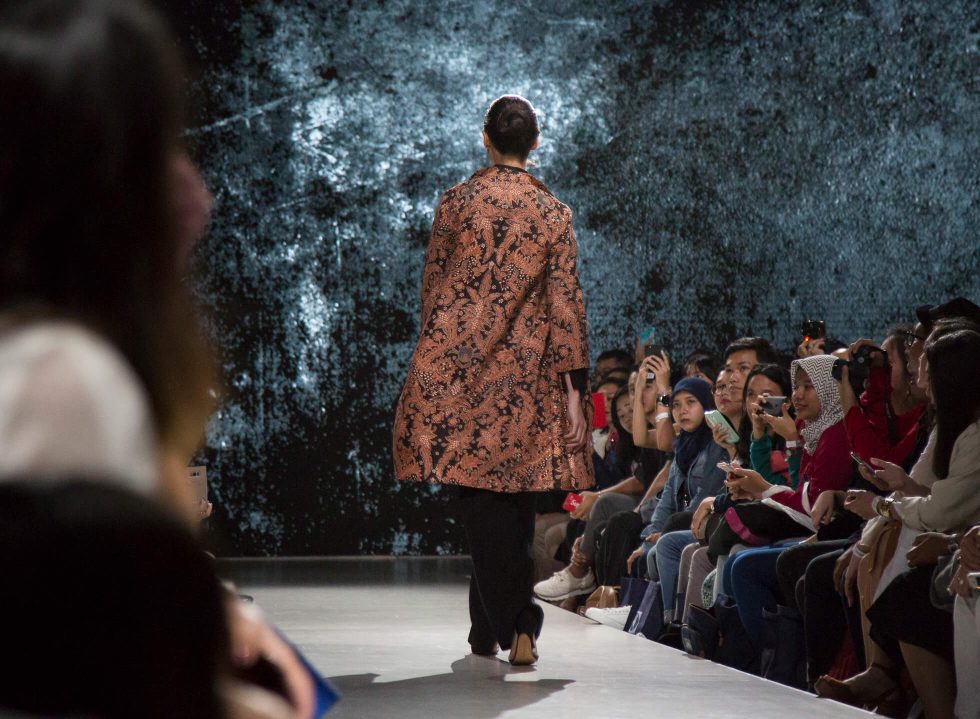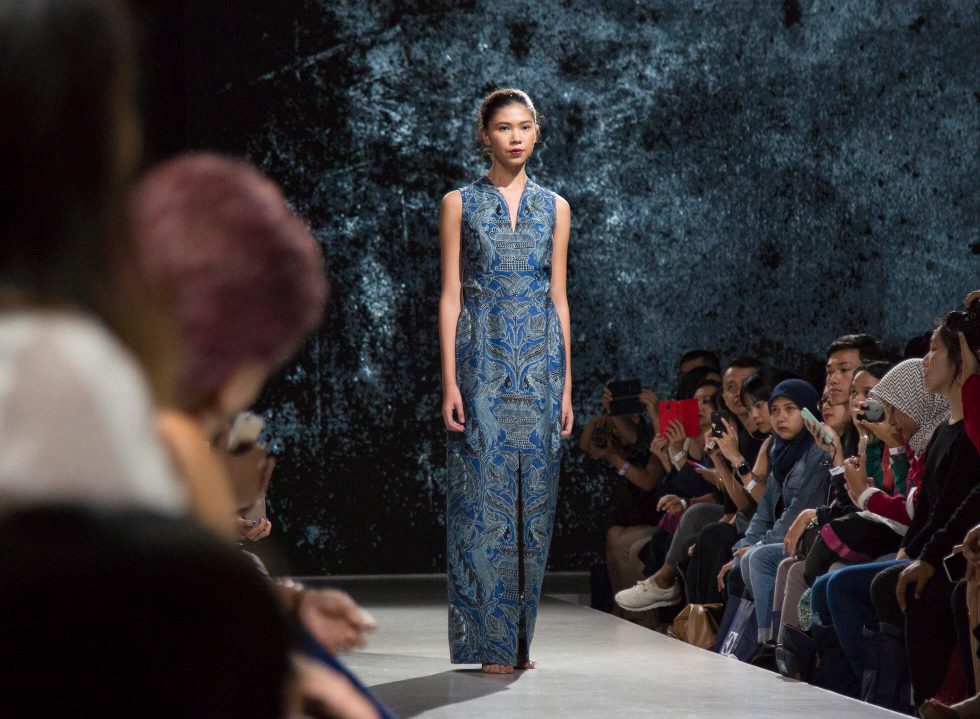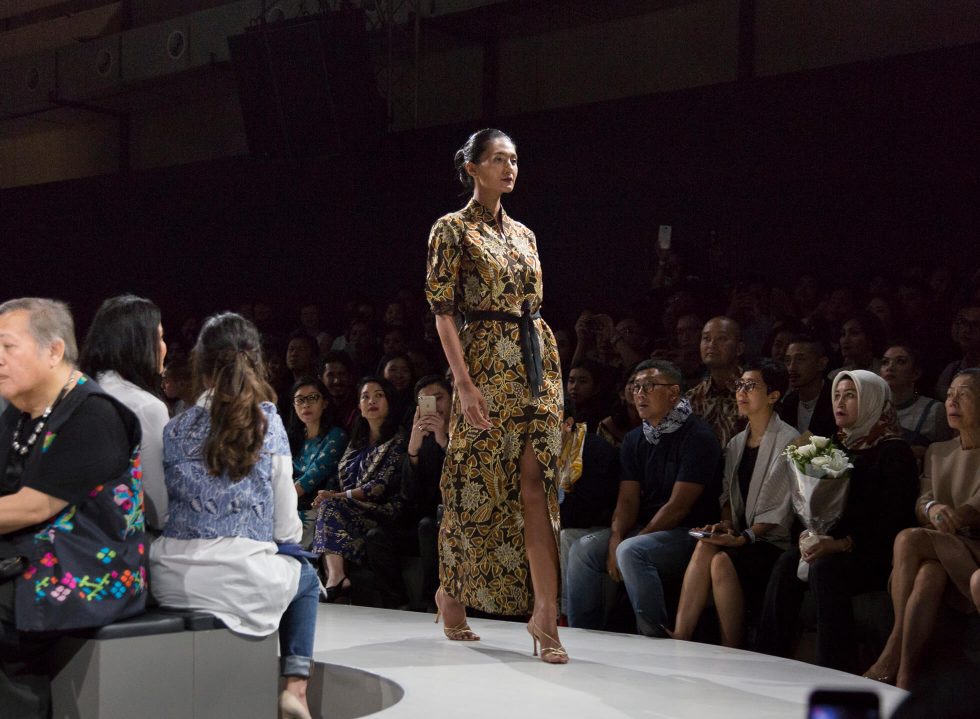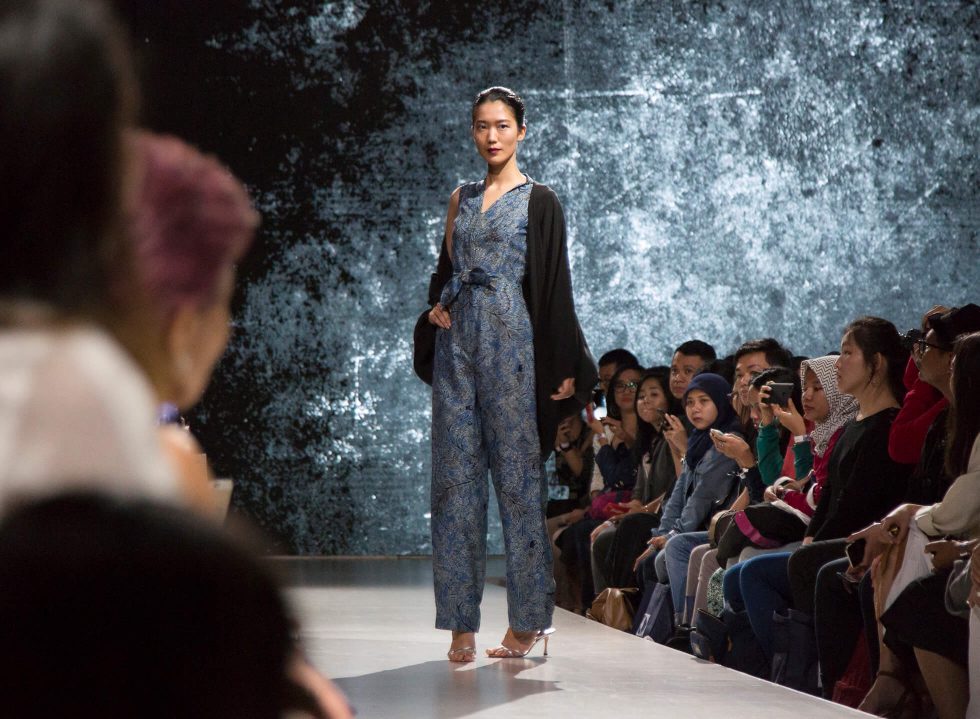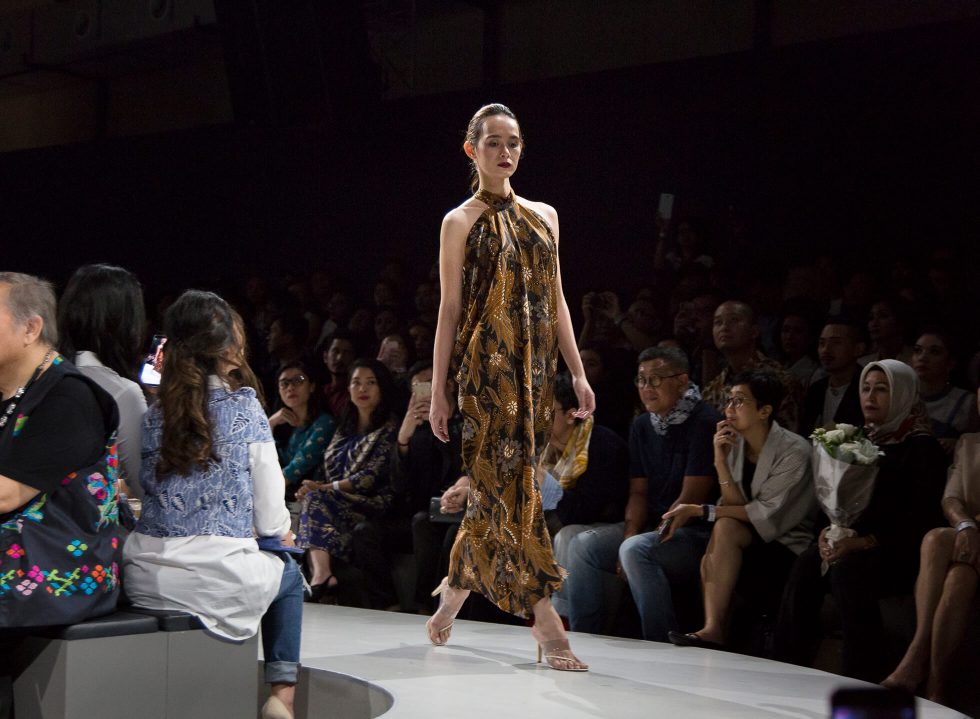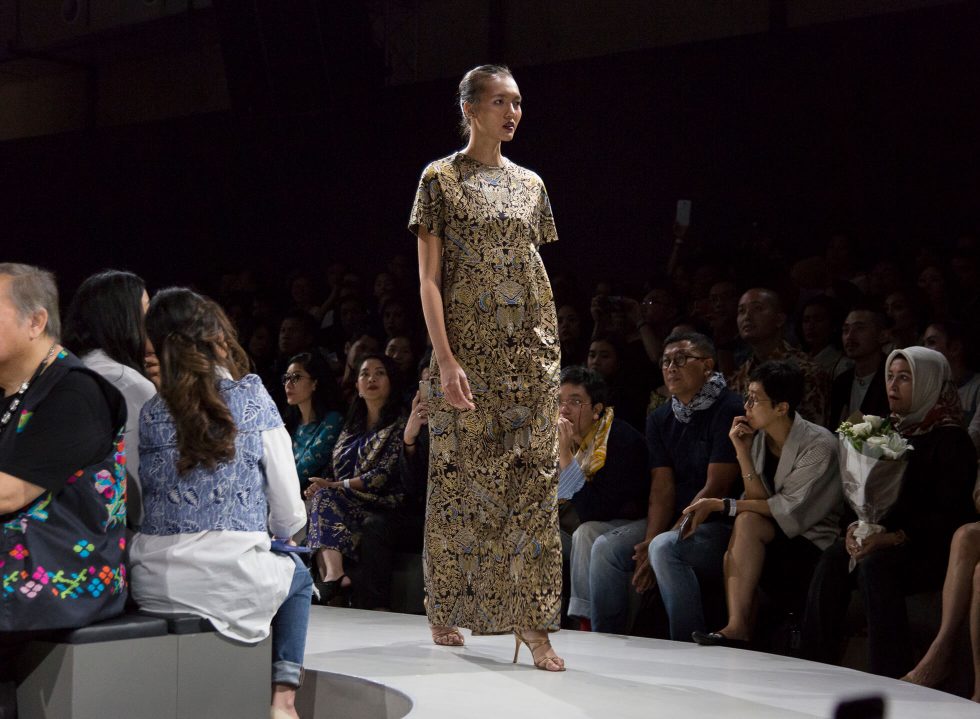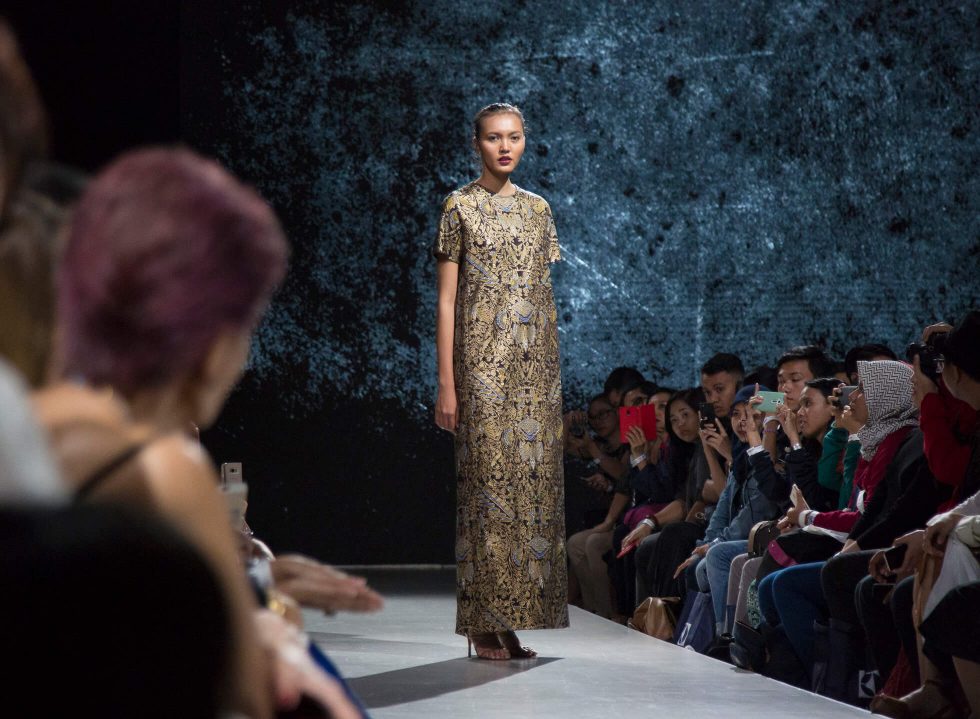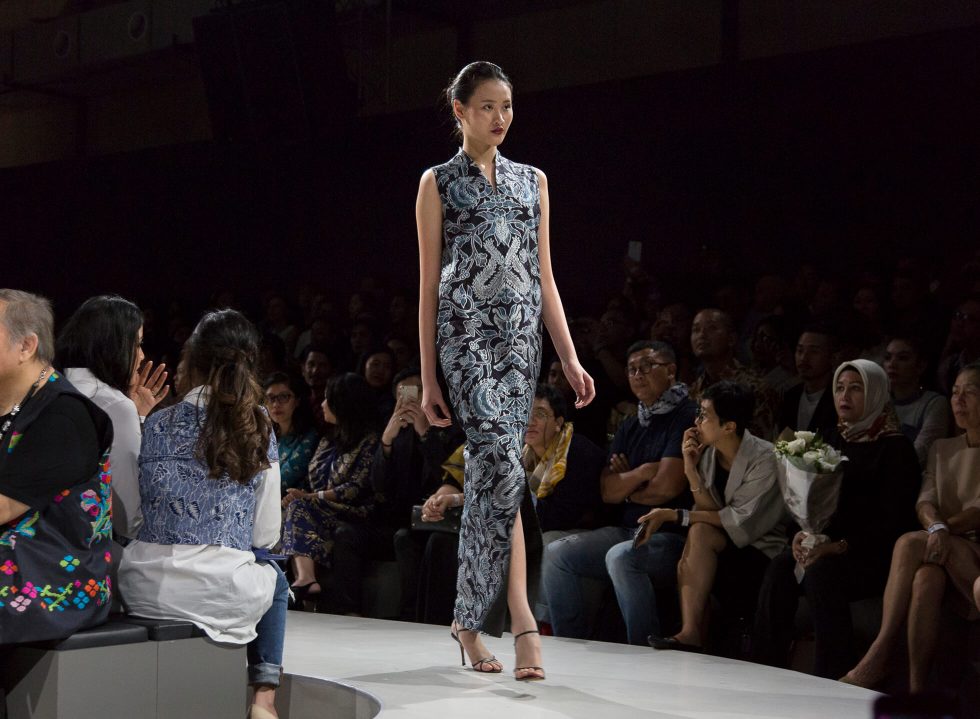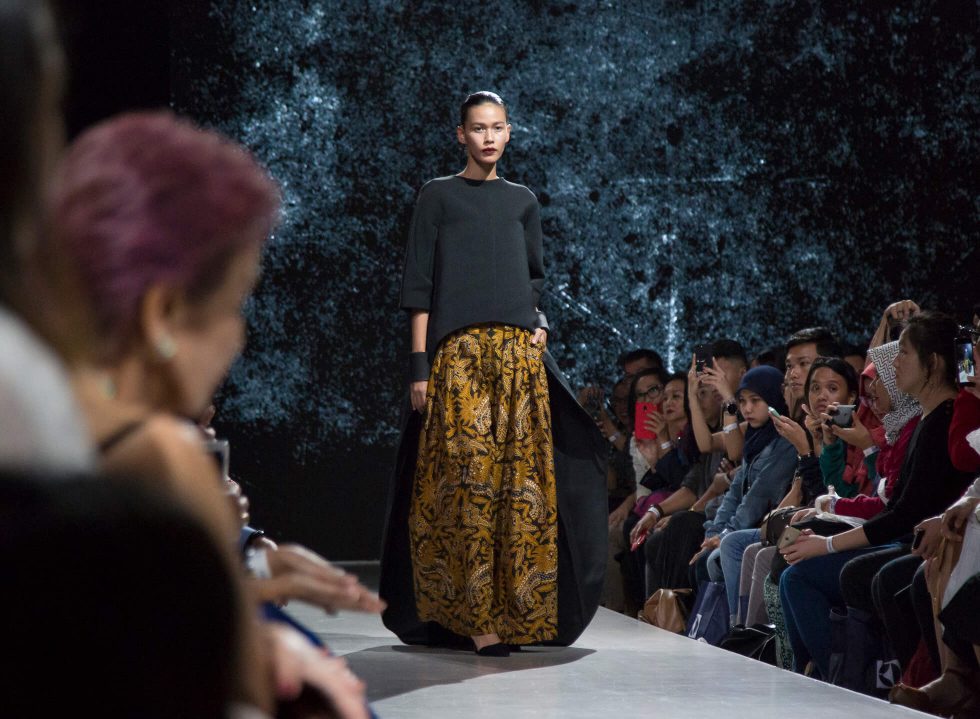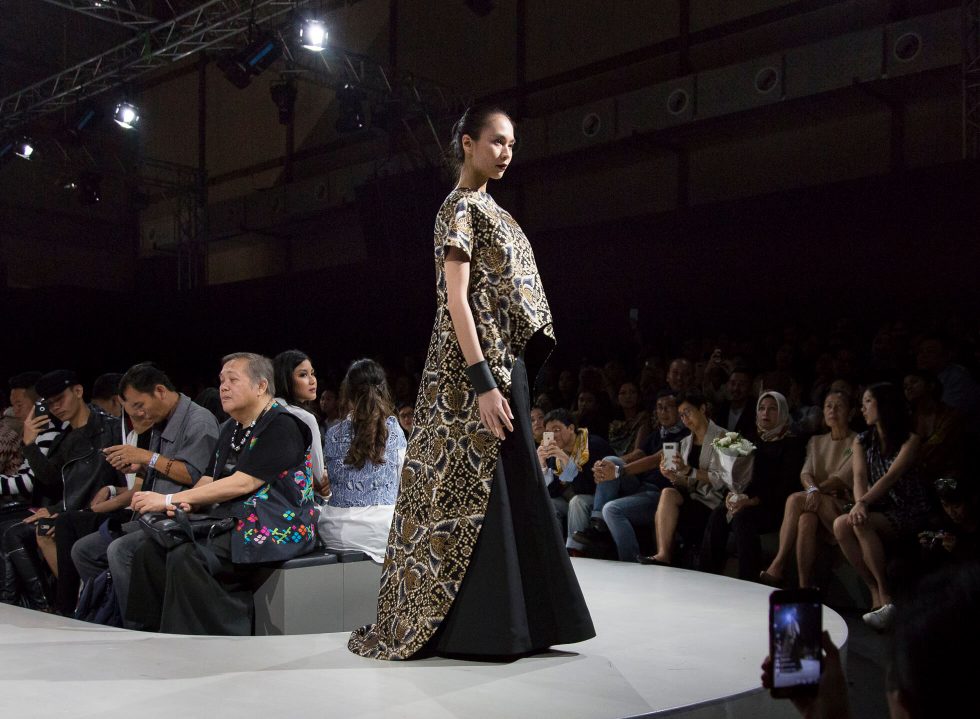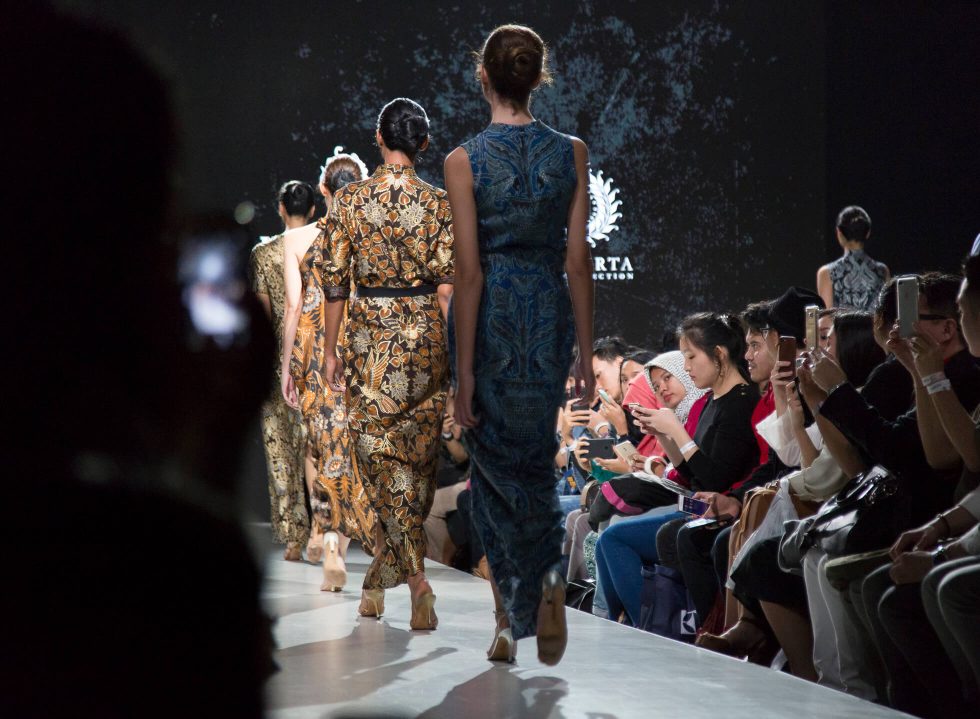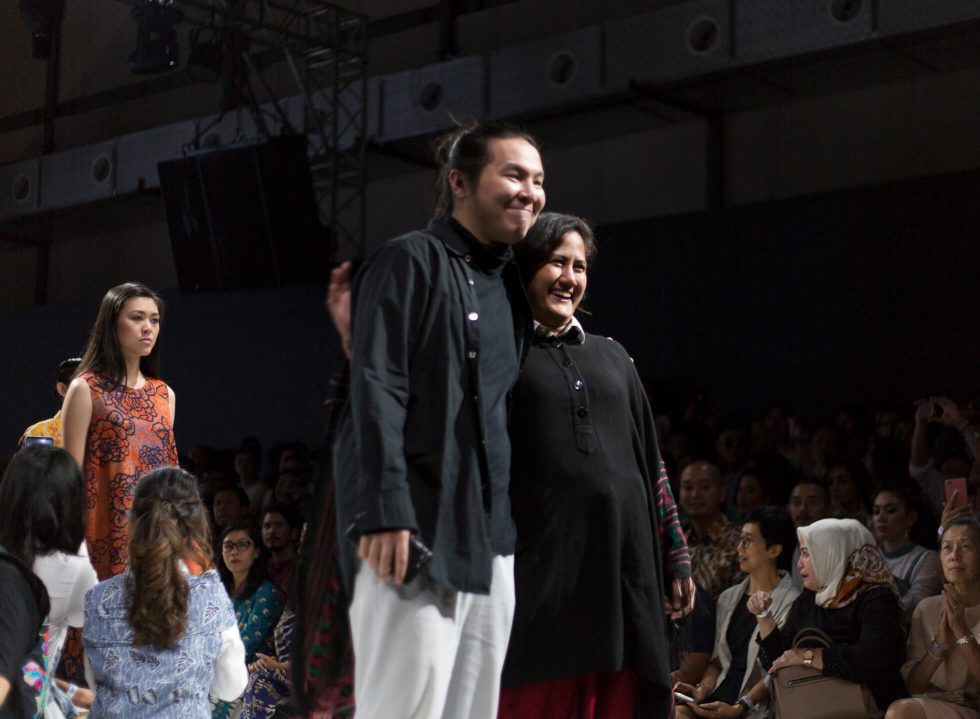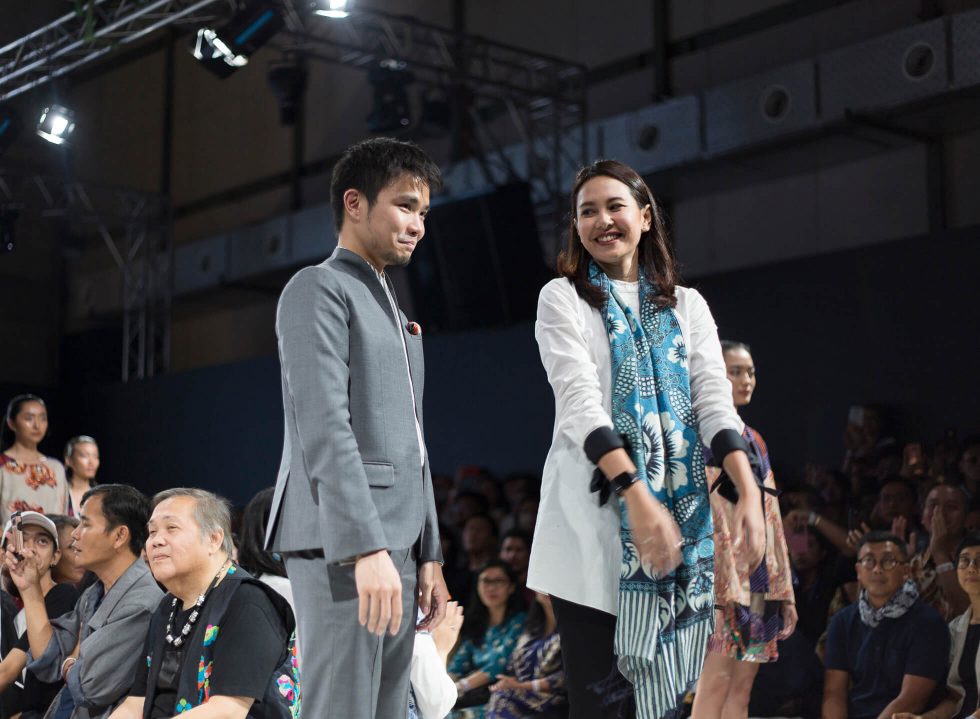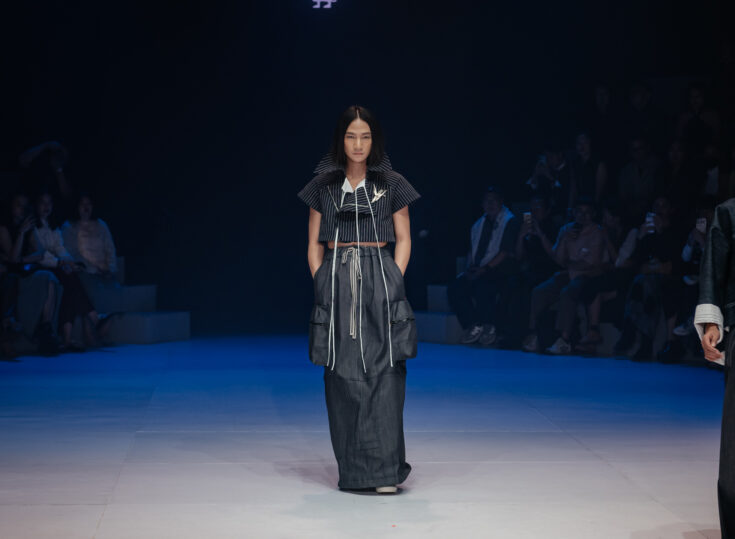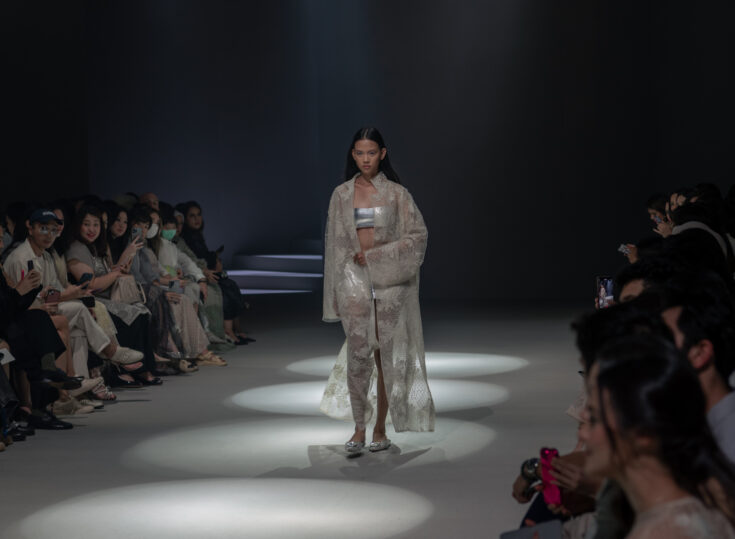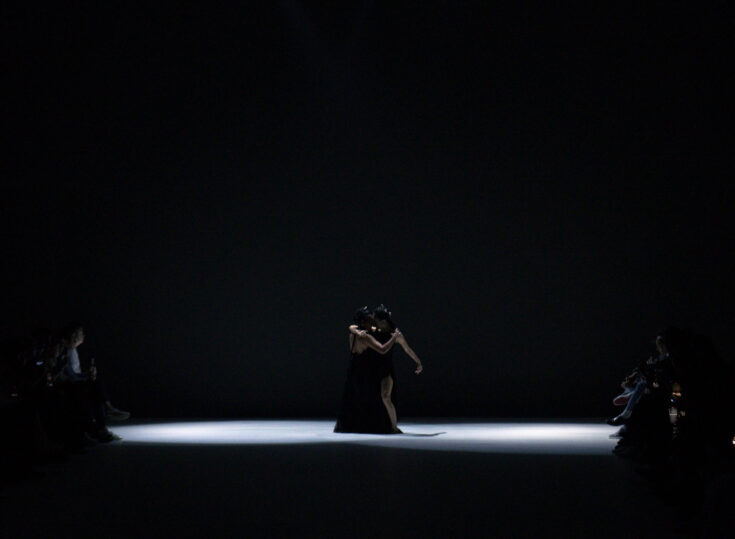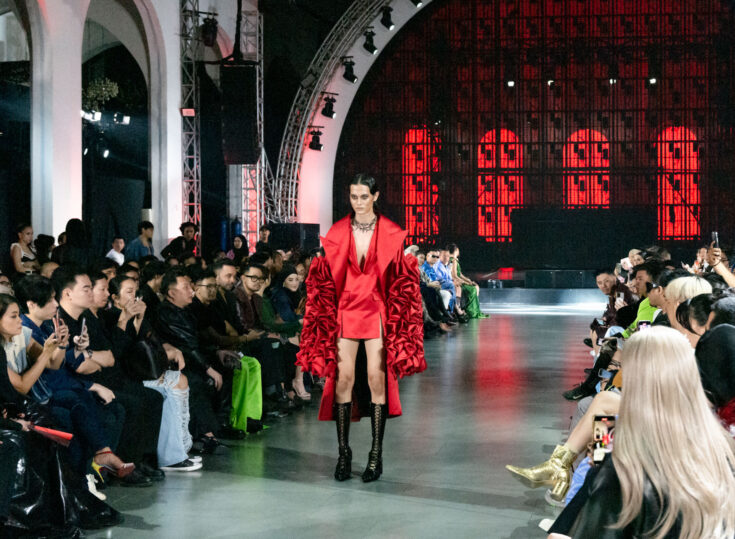The last day of Plaza Indonesia Fashion Week offered a dialogue in preserving traditions by inviting a handful of designers to collaborate with established brands that focus on traditional textiles, such as Parang Kencana and Iwan Tirta.
Kicking off the Friday night show is Wilsen Willim with Parang Kencana. Wilsen immediately proposed a relaxed version of workwear that no doubt aimed at the yuppies. Instead of trying to cover all bases, Wilsen brought the attention to shirtdress to anchor the collection.
For example, he subverted the formal batik in gaudy purple and presented it simply in an ankle-length batik shirtdress that was surprisingly fresh. Wilsen also focused on offering the possibilities of layering. Those shirts and shirtdresses, some of them in two-tone panel, can be worn as it is or paired with either a boxy jacket or coat for formal occasions.
But the attempt to provide an edge to classic batik was also accompanied with the idea of mobility. This is the type of clothes that command attention at work while simultaneously allows you to chase after superior for an elevator pitch. Unfortunately, the presence of two male models in the show felt out of place.
And what a youthful collection from Amanda Lestari at Lekat. A hybrid of bustier dress and shorts punctuated with three horizontal blossoms plus a red scarf casually draped over the neck set the tone of striking yet subdued playfulness for the rest of the show.
Even though the label has been around since 2013, this came across as a true representation of what Lekat is as a label. Mainly because, in the past, it felt like Amanda was too occupied in highlighting the craftsmanship of Baduy women weavers that ultimately constrained the collections. There was this persisting feeling that Lekat women are those eccentric aunties who talk too much during family dinner.
But here, Amanda managed to give a new spin to the label’s commitment in preserving Baduy’s traditions with an effective twist. In particular, hand-woven Baduy fabrics were paired with crumply thin organza that are visually arresting. To wit, a blouse was tucked in a pair of slim pants with red lightweight organza jacket that peeled back nonchalantly to waist.
Even so, that’s not to say this collection only appeals to the younger audience. Pick those looks apart and there are plenty of wearable separates that will work on a teenager to working mother.
It’s hard to recall the presence of any colours apart from the usual monochromatic palette that dominates the pieces from KRATON Auguste Soesastro. And this collaboration with Iwan Tirta Private Collection injects a refreshing perspective for both brands because the union worked out perfectly in harmony.
Leveraging the strength from both sides, the esteemed hand-made batik by local artisans from Iwan Tirta was further amplified by Auguste Soesastro’s impeccable clean tailoring. But what made this show memorable was the clear intention of the collection: the female executives. The memory of gray button-up dress with stand-up collar layered with soft batik jacket in blue lingers because they provided a convincing vision. Same goes to a batik shirtdress with Watteau train that lightly grazes the floor.
If the collections from Wilsen Willim and Lekat tip towards the scale of fashion than wearability, then it’s the other way round for Auguste. The designer didn’t forget the fact that female executive do have a life outside of work. That’s why the pieces zeroed in on comfort whether they are worn for a cocktail party, wedding reception or charity gala. The silhouettes are loose and even at its strictest, they are lightly nipped at the waist.
The conversation around preserving the country’s tradition especially in the form of national textile has been buzzing for the past couple of years. While the earlier efforts from some of the local designers have been mostly stuck in tedious or highly unwearable pieces that are only aimed at the runway, the collections from Wilsen, Amanda and Auguste, along with other crop of Indonesian designers, felt like an optimistic progress. In our current social media era where white noises come in from every direction, an imaginative collection grounded in reality, like those three, has the ability to command better attention. And these days, what worth more than attention?
